Physical rehabilitation approaches for the recovery of function and mobility following stroke
- PMID: 39932103
- PMCID: PMC11812092
- DOI: 10.1002/14651858.CD001920.pub4
Physical rehabilitation approaches for the recovery of function and mobility following stroke
Abstract
Background: Various approaches to physical rehabilitation to improve function and mobility are used after stroke. There is considerable controversy around the relative effectiveness of approaches, and little known about optimal delivery and dose. Some physiotherapists base their treatments on a single approach; others use components from several different approaches.
Objectives: Primary objective: To determine whether physical rehabilitation is effective for recovery of function and mobility in people with stroke, and to assess if any one physical rehabilitation approach is more effective than any other approach.
Secondary objective: To explore factors that may impact the effectiveness of physical rehabilitation approaches, including time after stroke, geographical location of study, intervention dose/duration, intervention provider, and treatment components. Stakeholder involvement: Key aims were to clarify the focus of the review, inform decisions about subgroup analyses, and co-produce statements relating to key implications.
Search methods: For this update, we searched the Cochrane Stroke Trials Register (last searched November 2022), CENTRAL (2022, Issue 10), MEDLINE (1966 to November 2022), Embase (1980 to November 2022), AMED (1985 to November 2022), CINAHL (1982 to November 2022), and the Chinese Biomedical Literature Database (to November 2022).
Selection criteria: Inclusion criteria: Randomised controlled trials (RCTs) of physical rehabilitation approaches aimed at promoting the recovery of function or mobility in adult participants with a clinical diagnosis of stroke.
Exclusion criteria: RCTs of upper limb function or single treatment components.
Primary outcomes: measures of independence in activities of daily living (IADL) and motor function.
Secondary outcomes: balance, gait velocity, and length of stay.
Data collection and analysis: Two independent authors selected studies according to pre-defined eligibility criteria, extracted data, and assessed the risk of bias in the included studies. We used GRADE to assess the certainty of evidence.
Main results: In this review update, we included 267 studies (21,838 participants). Studies were conducted in 36 countries, with half (133/267) in China. Generally, studies were heterogeneous, and often poorly reported. We judged only 14 studies in meta-analyses as at low risk of bias for all domains and, on average, we considered 33% of studies in analyses of primary outcomes at high risk of bias. Is physical rehabilitation more effective than no (or minimal) physical rehabilitation? Compared to no physical rehabilitation, physical rehabilitation may improve IADL (standardised mean difference (SMD) 1.32, 95% confidence interval (CI) 1.08 to 1.56; 52 studies, 5403 participants; low-certainty evidence) and motor function (SMD 1.01, 95% CI 0.80 to 1.22; 50 studies, 5669 participants; low-certainty evidence). There was evidence of long-term benefits for these outcomes. Physical rehabilitation may improve balance (MD 4.54, 95% CI 1.36 to 7.72; 9 studies, 452 participants; low-certainty evidence) and likely improves gait velocity (SMD 0.23, 95% CI 0.05 to 0.42; 18 studies, 1131 participants; moderate-certainty evidence), but with no evidence of long-term benefits. Is physical rehabilitation more effective than attention control? The evidence is very uncertain about the effects of physical rehabilitation, as compared to attention control, on IADL (SMD 0.91, 95% CI 0.06 to 1.75; 2 studies, 106 participants), motor function (SMD 0.13, 95% CI -0.13 to 0.38; 5 studies, 237 participants), and balance (MD 6.61, 95% CI -0.45 to 13.66; 4 studies, 240 participants). Physical rehabilitation likely improves gait speed when compared to attention control (SMD 0.34, 95% CI 0.14 to 0.54; 7 studies, 405 participants; moderate-certainty evidence). Does additional physical rehabilitation improve outcomes? Additional physical rehabilitation may improve IADL (SMD 1.26, 95% CI 0.82 to 1.71; 21 studies, 1972 participants; low-certainty evidence) and motor function (SMD 0.69, 95% CI 0.46 to 0.92; 22 studies, 1965 participants; low-certainty evidence). Very few studies assessed these outcomes at long-term follow-up. Additional physical rehabilitation may improve balance (MD 5.74, 95% CI 3.78 to 7.71; 15 studies, 795 participants; low-certainty evidence) and gait velocity (SMD 0.59, 95% CI 0.26 to 0.91; 19 studies, 1004 participants; low-certainty evidence). Very few studies assessed these outcomes at long-term follow-up. Is any one approach to physical rehabilitation more effective than any other approach? Compared to other approaches, those that focus on functional task training may improve IADL (SMD 0.58, 95% CI 0.29 to 0.87; 22 studies, 1535 participants; low-certainty evidence) and motor function (SMD 0.72, 95% CI 0.21 to 1.22; 20 studies, 1671 participants; very low-certainty evidence) but the evidence in the latter is very uncertain. The benefit was sustained long-term. The evidence is very uncertain about the effect of functional task training on balance (MD 2.16, 95% CI -0.24 to 4.55) and gait velocity (SMD 0.28, 95% CI -0.01 to 0.56). Compared to other approaches, neurophysiological approaches may be less effective than other approaches in improving IADL (SMD -0.34, 95% CI -0.63 to -0.06; 14 studies, 737 participants; low-certainty evidence), and there may be no difference in improving motor function (SMD -0.60, 95% CI -1.32 to 0.12; 13 studies, 663 participants; low-certainty evidence), balance (MD -0.60, 95% CI -5.90 to 6.03; 9 studies, 292 participants; low-certainty evidence), and gait velocity (SMD -0.17, 95% CI -0.62 to 0.27; 16 studies, 630 participants; very low-certainty evidence), but the evidence is very uncertain about the effect on gait velocity. For all comparisons, the evidence is very uncertain about the effects of physical rehabilitation on adverse events and length of hospital stay.
Authors' conclusions: Physical rehabilitation, using a mix of different treatment components, likely improves recovery of function and mobility after stroke. Additional physical rehabilitation, delivered as an adjunct to 'usual' rehabilitation, may provide added benefits. Physical rehabilitation approaches that focus on functional task training may be useful. Neurophysiological approaches to physical rehabilitation may be no different from, or less effective than, other physical rehabilitation approaches. Certainty in this evidence is limited due to substantial heterogeneity, with mainly small studies and important differences between study populations and interventions. We feel it is unlikely that any studies published since November 2022 would alter our conclusions. Given the size of this review, future updates warrant consensus discussion amongst stakeholders to ensure the most relevant questions are explored for optimal decision-making.
Copyright © 2025 The Authors. Cochrane Database of Systematic Reviews published by John Wiley & Sons, Ltd. on behalf of The Cochrane Collaboration.
Conflict of interest statement
Alex Todhunter‐Brown* ‐ Chief Scientist Office (Grant/Contract); former Editor of Cochrane Stroke (closed March 2023) and current Co‐lead of Cochrane Heart, Stroke & Circulation Thematic Group; not involved in editorial processing or decision‐making for this review update.
Ceri E Sellers ‐ no relevant interests; qualified physiotherapist and registered with the Health and Care Professions Council (HCPC) in the United Kingdom; researcher at Glasgow Caledonian University; member of the Chartered Society of Physiotherapy (CSP) in the United Kingdom.
Gillian Baer ‐ no relevant interests; lecturer in physiotherapy, Queen Margaret University, Edinburgh; carried out a trial included in this review (Baer 2007) ‐ Chief Scientist Office Scotland partial funding for Baer 2007.
Pei Ling Choo ‐ no relevant interests; freelance physiotherapist.
Julie Cowie ‐ none known.
Joshua D Cheyne ‐ former Information Specialist of Cochrane Stroke (closed March 2023) and was not involved in the editorial process or decision‐making for this review update.
Peter Langhorne* ‐ no relevant interests; published reviews in the area of multidisciplinary rehabilitation; previously worked as a health professional in multidisciplinary rehabilitation; former Editor of Cochrane Stroke (closed in March 2023) and was not involved in the editorial processing or decision‐making for this review update.
Julie Brown ‐ no relevant interests; Specialist Physiotherapist for Simpson Physiotherapy from October 2022 to February 2023.
Jacqui Morris ‐ none known.
Pauline Campbell ‐ Chief Scientist Office (Grant/Contract); National Institute for Health Research (Grant/Contract).
Figures


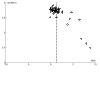
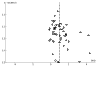
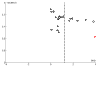

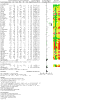
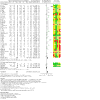
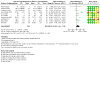
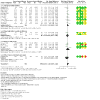
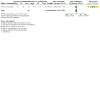
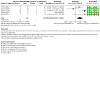
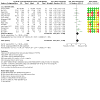
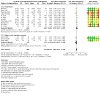
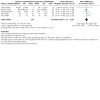

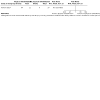
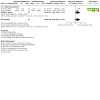

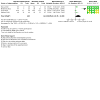
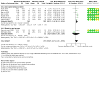

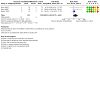
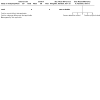
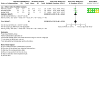
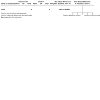
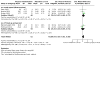
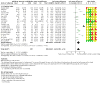
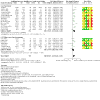
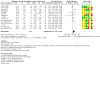
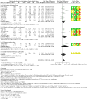
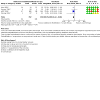
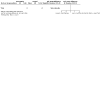
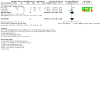

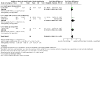
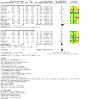
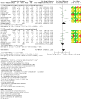
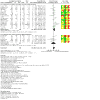


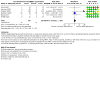
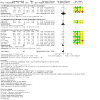
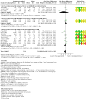
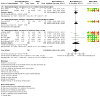
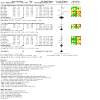
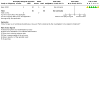
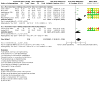
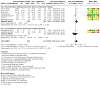

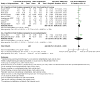
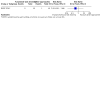
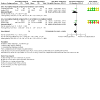

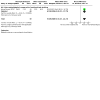
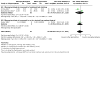
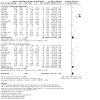
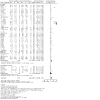
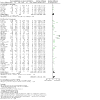
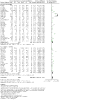
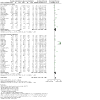
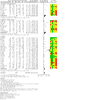
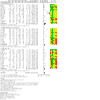
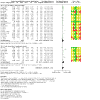
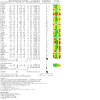
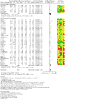
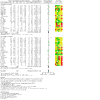

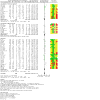
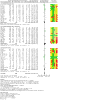
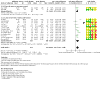
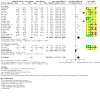
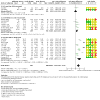
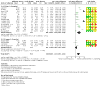
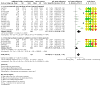
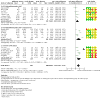
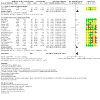
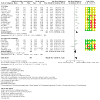
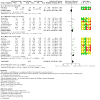
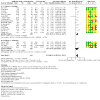
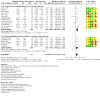
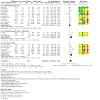
Update of
-
Physical rehabilitation approaches for the recovery of function and mobility following stroke.Cochrane Database Syst Rev. 2014 Apr 22;2014(4):CD001920. doi: 10.1002/14651858.CD001920.pub3. Cochrane Database Syst Rev. 2014. Update in: Cochrane Database Syst Rev. 2025 Feb 11;2:CD001920. doi: 10.1002/14651858.CD001920.pub4. PMID: 24756870 Free PMC article. Updated.
References
References to studies included in this review
ACTIV 2021 {published data only}
-
- Saywell NL. Augmented Community Telerehabilitation Intervention to improve outcomes for people with stroke. ACTIV: a randomised controlled trial and qualitative enquiry. PhD, Auckland University of Technology 2016.
-
- Taylor D, Saywell N. Telerehabilitation to improve outcomes for people with stroke: The ACTIV trial. Australian New Zealand Clinical Trials Registry (ANZCTR);ACTRN12612000464864.
Ain 2022 {published data only}
-
- Ain QU, Hassan Z, Ashraf S, Mahjabeen H, Kousar F, Waris M, Waris S. Comparison between effects of functional training program and conventional therapy on postural control and functional mobility in chronic stroke. Pakistan Journal of Medical and Health Sciences 2022;16(2):610-13. [DOI: 10.53350/pjmhs22162 610]
Aksu 2001 {published data only}
-
- Aksu S, Armutlu K, Cetisli N, Guclu A, Atay S, Guniken Y, et al. Numbers of exercises in acute stroke rehabilitation: is it important? Neurorehabilitation and Neural Repair 2001;15(4):348.
Alabdulwahab 2015 {published data only}
Allison 2007 {published data only}
-
- Allison R, Dennett R. Pilot randomized controlled trial to assess the impact of additional supported standing practice on functional ability post stroke. Clinical Rehabilitation 2007;21(7):614-9. - PubMed
Aloraini 2022 {published data only}
Anandan 2020 {published data only}
-
- Anandan D, Nidhi T, Arun B, Priya V. Effect of task specific training with proprioceptive neuromuscular facilitation on stroke survivors. Biomedicine 2020;40(3):363-6.
Arabzadeh 2018 {published data only}
-
- Arabzadeh S, Goljaryan S, Salahzadeh Z, Oskouei AE, Somee AS. Effects of a task-oriented exercise program on balance in Patients with hemiplegia following stroke. Iranian Red Crescent Medical Journal 2018;20(1):e38429.
Aravind 2022 {published data only}
-
- Aravind G, Bashir K, Cameron JI, Howe J-A, et al. Increasing access to task-oriented community-based exercise programs through healthcare-community partnerships to improve function post-stroke: feasibility of a 2-group randomized controlled trial protocol. Research Square 2021 [Preprint]. [DOI: 10.21203/rs.3.rs-599797/v1] - DOI - PMC - PubMed
-
- Aravind G, Bashir K, Cameron JI, et al. Community-based exercise programs incorporating healthcare-community partnerships to improve function post-stroke: feasibility of a 2-group randomized controlled trial. Pilot and Feasibility Studies 2022;8(88):1-19. [DOI: 10.1186/s40814-022-01037-9] - DOI - PMC - PubMed
-
- Salbach N, Bayley M, Jaglal S, Wodchis W, Hunter S, Hower JA, et al. Feasibility of a randomised trial evaluated a group, task-oriented community exercise program incorporating a healthcare-recreation partnership fo people with mobility limitations post-stroke. International Journal of Stroke 2018;13(2S):WSC18-1320.
-
- Salbach N. Does a group, task-oriented community-based exercise program improve everyday function in people with stroke? ClinicalTrials.gov 2017. [CLINICALTRIALS.GOV: NCT03122626]
Aries 2021 {published data only}
Arya 2019 {published data only}
-
- Arya KN, Pandian S, Sharma A, Kumar V, Kashyap VK. Interlimb coupling in poststroke rehabilitation: a pilot randomized controlled trial. Topics in Stroke Rehabilitation 2020;27(4):272-89. - PubMed
Baer 2007 {published data only}
-
- Baer G, Durward B, Weller D. An investigation into a home-based mobility rehabilitation programme for late-stage stroke. A pilot randomised controlled trial. Physiotherapy 2007;93 Suppl 1:S546.
Bai 2008 {published data only}
-
- Bai Y, Hu Y, Chen W, Wang X, Cheng A, Jiang C, et al. Study of effects of standardized three stage rehabilitation treatment on motor function in ischemic stroke patients. Journal of Rehabilitation Medicine 2008;Suppl 46:109.
-
- Bai Y, Hu Y, Wu Y, Zhu Y, He Q, Jiang C, et al. A prospective, randomized, single-blinded trial on the effect of early rehabilitation on daily activities and motor function of patients with hemorrhagic stroke. Journal of Clinical Neuroscience 2012;19:1376-9. - PubMed
-
- Li Yingying, Zhang Bei, Li Ce, Bai Yulong, Hu Yongshan, Wu Yi. Standardized three-stage rehabilitation program enhances the functional independence of patients with hemorrhagic stroke [规范三级康复治疗对脑出血患者功能独立性的影响]. Chinese Journal of Sports Medicine 2014;33(4):303-7.
Bai 2013 {published data only}
-
- Yu-Long Bai, Li Li, Yong-Shan Hu, Yi Wu, Pei-Jing Xie, Song-Wei Wang, et al. Prospective, randomized controlled trial of physiotherapy and acupuncture on motor function and daily activities in patients with ischemic stroke. Journal of Alternative and Complementary Medicine 2013;19(8):684-9. [DOI: 10.1089/acm.2012.0578] - DOI - PubMed
Bai 2014 {published data only}
-
- Bai YL, Hu YS, Wu Y, Zhu YL, Zhang B, Jiang CY, et al. Long-term three-stage rehabilitation intervention alleviates spasticity of the elbows, fingers, and plantar flexors and improves activities of daily living in ischemic stroke patients: a randomized, controlled trial. Neuroreport 2014;25(13):998-1005. - PubMed
Bale 2008 {published data only}
-
- Bale M, Strand LI. Does functional strength training of the leg in subacute stroke improve physical performance? A pilot randomized controlled trial. Clinical Rehabilitation 2008;22:911-21. - PubMed
Batchelor 2012 {published data only}
-
- Batchelor FA, Hill KD, Mackintosh SF, Said CM, Whitehead CH. Effects of a multifactorial falls prevention program for people with stroke returning home after rehabilitation: a randomized controlled trial. Archives of Physical Medicine and Rehabilitation 2012;93(9):1648-55. - PubMed
Behrman 2011 {published data only}
-
- Behrman A, Sullivan KJ, Wu SS, Nadeau SE, Dobkin BH, Azen SP, et al. Functional walking ability 2 to 6 months after stroke: effects of progressive task-specific and impairment-based exercise rehabilitation programs compared to usual care. Stroke 2011;42(11):e610.
Bek 2016 {published data only}
Bhatia 2014 {published data only}
-
- Bhatia E, Shah T, Ghandi H, Sathes Kumar D. A comparative study on task specific strength training and resistance training to improve lower limb strength and function in hemiparetic patients. Indian Journal of Physiotherapy and Occupational Therapy 2014;8(3):59-63.
Blennerhassett 2004 {published data only}
-
- Blennerhassett J, Dite W. Additional task-related practice improves mobility and upper limb function early after stroke: a randomised controlled trial. Australian Journal of Physiotherapy 2004;50(4):219-24. - PubMed
Bordoloi 2020 {published data only}
-
- Bordoloi K, Deka RS. Modified Rood’s approach and ability of independent selfcare in haemorrhagic stroke patients of Assam, India. International Journal of Research in Medical Sciences 2020;8(3):1070-5.
Brock 2005 {published data only}
-
- Brock K, Haase G, Cotton S, Thompson M. Effects of physiotherapy interventions based on the Bobath concept versus structured task practice for improving the ability to walk outdoors following stroke. International Journal of Stroke 2010;5 Suppl 1:11.
-
- Brock K, Haase G, Rotacher G, Cotton S. Does physiotherapy based on the Bobath concept achieve greater improvement in walking ability compared to structured task practice? A pilot randomised controlled trial. Neurorehabilitation and Neural Repair 2012;26(6):727-8.
-
- Brock K, Haase G, Rothacher G, Cotton S. Does physiotherapy based on the Bobath concept, in conjunction with a task practice, achieve greater improvement in walking ability in people with stroke compared to physiotherapy focused on structured task practice alone? A pilot randomized controlled trial. Clinical Rehabilitation 2011;25(10):903-12. - PubMed
-
- Brock K. Regaining the ability to walk outdoors following stroke: the efficacy of the Bobath concept compared to structural task practice. Australian New Zealand Clinical Trials Registry (ANZCTR), 2005. http://www.anzctr.org.au/.
Brouwer 2018 {published data only}
-
- Brouwer B, Bryant D, Garland SJ. Effectiveness of client-centered "tune-ups" on community reintegration, mobility, and quality of life after stroke: a randomized controlled trial. Archives of Physical Medicine and Rehabilitation 2018;99(7):1325-32. - PubMed
Bui 2019 {published data only}
-
- Bui M-M, Nguyen V-D, Thai H-N, Trinh D-T. The efficiency of combining modified acupuncture and motor relearning method on post-stroke patients. MedPharmRes 2019;3(1):17-21. [DOI: 10.32895/UMP.MPR.3.1.17] - DOI
-
- Bui Pham Minh Man, Thuong Trinh Thi Dieu. Efficiency of the combination of modified acupuncture and motor relearning method in post-stroke patients. Biomed Res Ther 2017;4:S94.
Candan 2017 {published data only}
-
- Candan AS, Livanelioglu A. Effects of modified constraint-induced movement therapy for lower limb on motor function in stroke patients: a randomized controlled study. International Journal of Physiotherapy 2017;4(5):269-77.
Cao 2014 {published data only}
-
- Cao Li, Tian Weiqin. Analysis of the effect of intensive walking training in the rehabilitation of limbs in patients with early stroke hemiplegia [强化步行训练在早期脑卒中偏瘫患者肢体康复过程中的果分析]. Laboratory Medicine and Clinic 2014;11(15):2175-7.
Capisizu 2016 {published data only}
-
- Capisizu A, Aurelian SM, Mirsu-Paun A et al. A key for post-stroke rehabilitation in the elderly. Acta Medica Mediterranea 2016;32:1003-7.
Carlson 2006 {published data only}
-
- Carlson TD, Cahn L, Leloup B. The effects of intense massed practice on balance and ambulation post-stroke: a pilot study. Platforms, thematic posters, and posters for CSM 2007. Journal of Neurologic Physical Therapy 2006;30(4):211.
Chae 2017 {published data only}
Chan DY 2006 {published data only}
-
- Chan DY, Chan CC, Au DK. Motor relearning programme for stroke patients: a randomized controlled trial. Clinical Rehabilitation 2006;20(3):191-200. - PubMed
Chang 2015 {published data only}
-
- Chang Hong. Analysis of factors affecting the prognosis of limb motor function and ADL ability in stroke patients with hemiplegia after three-level rehabilitation therapy. Mod Diagn Treat 2015;26(13):2978-9.
Chan WN 2017 {published data only}
Chen G 2014 {published data only}
-
- Chen Guijun, Liu Yijing. Influence of early limb function exercise on hemiplegia patients with cerebral infarction [早期肢体功能锻炼对脑梗死偏瘫病人的影响]. Chinese Nursing Research 2014;28(5):1846-7.
Cheng 2021 {published data only}
-
- Cheng Wei, Liu Xiaojun, Zhang Ekeng, Cheng Qiaozhen. Effect of standardized three-level rehabilitation treatment on the motor function of patientswith ischemic stroke [规范的三级康复治疗对缺血性脑卒中患者运动功能的影响]. IMHGN 2021;27(12):1778-81. [DOI: 10 . 3760 /cma . j . issn . 1007 - 1245 . 2021 . 12. 011]
-
- Cheng Wei, Liu Xiaojun, Zhang Ekeng, Cheng Qiaozhen. Influence of standardized tertiary rehabilitation therapy on motor function in patients with ischemic stroke [规范的三级康复治疗对缺血性脑卒中患者运动功能的影响]. IMHGN 2021;27(12):1778.
Chen J 2014 {published data only}
-
- Chen Jiang. Analysis of the effect of community tertiary rehabilitation therapy on the treatment of stroke sequelae. Contemporary Medicine Forum 2014;12(20):215-6.
Chen L 2019 {published data only}
-
- Chen L, Xiong S, Liu Y, Lin M, Zhu L, Zhong R, et al. Comparison of motor relearning program versus Bobath approach for prevention of poststroke apathy: a randomized controlled trial. Journal of Stroke and Cerebrovascular Diseases 2019;28(3):655-64. - PubMed
Chen P 2014 {published data only}
-
- Chen Peishun, Zhong Tao, Tang Xiumei, Yang Huixian, Tan Bidong, Su Rutong, et al. Effects of functional exercise training on lower limb muscle strength and muscle tone in stroke patients with hemiplegia. Nerve Injury and Functional Reconstruction (translated from Chinese) 2014;9(2):161-2. [DOI: 10.3870/sjsscj.2014.02.022] - DOI
Chen S 2021 {published data only}
Chen Y 2011 {published data only}
-
- Chen Yan. Influence of post-discharge rehabilitation guidance on early rehabilitation of patients with limb paralysis caused by stroke. China Prac Med 2011;6(29):252-3.
Choi JU 2015 {published data only}
Choi YK 2013 {published data only}
Chu 2003 {published data only}
-
- Chu P. Effect of early facilitation techniques on motor function of stroke patients. Zhongguo Linchuang Kangfu 2003;7(7):1189.
Cooke 2006 {published data only}
-
- Cooke E, Tallis R, Miller S, Pomeroy V. The effects of type and intensity of physiotherapy on lower limb strength and function after stroke. In: UK Stroke Forum Conference. 2007:25-6.
-
- Cooke EV, Tallis RC, Clark A, Pomeroy VM. Efficacy of functional strength training on restoration of lower-limb motor function early after stroke: phase I randomized controlled trial. Neurorehabilitation and Neural Repair 2010;24(1):88-96. - PubMed
-
- Cooke EV, Tallis RC, Miller S, Pomeroy VM. The effects of functional strength training on lower limb strength and function after stroke. In: UK Stroke Forum Conference. 2006:95.
-
- Kerr A, Cooke EV, Rowe P, Clark A, Pomeroy V. The effects of different physical therapy interventions on restoring fluency of sit-to-stand early after stroke. randomised controlled trial. International Journal of Stroke 2012;7:49. [DOI: 10.1111/j.1747-4930.2012.00961.x] - DOI
-
- Kerr A, Clark A, Cooke EV, Rowe V, Pomeroy VM. Functional strength training and movement performance therapy produce analogous improvement in sit-to-stand early after stroke: early-phase randomised controlled trial CNO - CN-01403235. Physiotherapy 2017;103(3):259-65. [DOI: 10.1016/j.physio.2015.12.006] - DOI - PubMed
Dai 2015 {published data only}
-
- Dai L. Effects of acupuncture and rehabilitation training on motor function of strokepatients. Chinese Medicine Modern Distance Education of China (translated journal title) 2015;13(11):72-3. [DOI: 10.3969/j.issn.1672-2779.2015.11.038] - DOI
Dalal 2018 {published data only}
-
- Dalal KK, Joshua AM, Nayak A, Mithra P, Misri Z, Unnikrishnan B. Effectiveness of prowling with proprioceptive training on knee hyperextension among stroke subjects using videographic observation- a randomised controlled trial. Gait Posture 2018;61:232-7. - PubMed
Danlami 2017 {published data only}
-
- Abdullahi, A, Danlami KA. Remodeling the protocol of lower limb constraint induced movement therapy: a pilot randomized controlled trial. Pan African Clinical Trials Registry 2017;PACTR201703002073205.
-
- Danlami KL, Abdullahi A. Remodelling the protocol of lower limb constraint-induced movement therapy:a pilot randomized controlled trial. Arch Physiother Glob Res 2017;21(4):21-7.
Dean 2000 {published data only}
-
- Dean CM, Richards CL, Malouin F. Task-related circuit training improves performance of locomotor tasks in chronic stroke: a randomised, controlled pilot trial. Archives of Physical Medicine and Rehabilitation 2000;81:409-17. - PubMed
Dean 2006 {published data only}
-
- Dean C, Rissel C, Sharkey M, Sherrington C, Cumming R, Lord S, et al. Ongoing exercise opportunities to prevent falls and enhance mobility in community dwellers after stroke: the stroke club trial. International Journal of Stroke 2010;5:12.
-
- Dean C. Exercise intervention to prevent falls, enhance mobility and increase physical activity in community dwellers after stroke: a randomised controlled trial. Australian New Zealand Clinical Trials Registry (ANZCTR), 2006. http://www.anzctr.org.au/.
-
- Dean CM, Rissel C, Sherrington C, Sharkey M, Cumming RG, Lord SR, et al. Exercise to enhance mobility and prevent falls after stroke: the community stroke club randomized trial. Neurorehabilitation and Neural Repair 2012;26(9):1046-57. - PubMed
Deng 2011 {published data only}
-
- Deng RY, Xing FM, Wang L, Zhao HY. Influence of ADL system intervention on movement function and quality of life of stroke patients. Journal of Jilin University Medicine Edition 2011;37(6):1129-32.
Ding 2015 {published data only}
-
- Ding Yanying, Liu Wanyan. Patients with hemiplegic cerebral infarction in early stage of targeted limb task function. The effect of strength training. [脑梗死偏瘫患者在早期行针对性肢体任务功能或力量训练的效果]. China Prac Med 2015;10(17):271-3. [DOI: 10.14163/j.cnki.11-5547/r.2015.17.186] - DOI
DOSE 2020 {published data only}
-
- Klassen T, Dukelow S, Bayley M, Hill M, Piitz M, Pooyania S, et al. Integrating front-line clinicians to deliver complex interventions in multi-site, randomized, stroke rehabilitation clinical trials: lessons learned from the dose study. International Journal of Stroke 2018;13(25):90.
-
- Klassen T, Eng JJ, Bayley M, Benavente O, Krassioukov A, Piitz M, et al. Determining Optimal post-Stroke Exercise (DOSE): study protocol for a randomized controlled trial investigating exercise intensity during inpatient rehabilitation. International Journal of Stroke 2017;12(45):57. - PubMed
-
- Klassen TD, Dukelow SP, Bayley MT, Benavente O, Hill MD, Krassioukov A, et al. Determining optimal poststroke exercise: study protocol for a randomized controlled trial investigating therapeutic intensity and dose on functional recovery during stroke inpatient rehabilitation. International Journal of Stroke 2019;14(1):80-6. [DOI: 10.1177/1747493018785064] - DOI - PubMed
-
- Klassen TD, Dukelow SP, Bayley MT, Benavente O, Hill MD, Krassioukov A, et al. Higher doses improve walking recovery during stroke inpatient rehabilitation. Stroke 2020;Sep 51(9):2639-48. - PubMed
-
- Klassen TD, Eng JJ, Bayley M, Benavente O, Bennett J, Fraser J, et al. Implementing an extra hour of intensive, task-specific, physical therapy daily for individuals post-stroke during inpatient rehabilitation: Feasibility data from the DOSE study. World Stroke Organization 2015;10(4):36-106.
Du 2014 {published data only}
-
- Du Xiangzhu, Zhang Yunxu, Shang Shumei, Guo Liangjun, Shen Zilu, Ma Yue. Influence of intensive walking training on the early rehabilitation effect of acute cerebral infarction patients with hemiplegia [强化步行训练对急性脑梗死偏瘫患者早期康复效果的影响]. Anhui Medical and Pharmaceutical Journal 2014;18(12):2406-7. [DOI: 1 0 . 3 9 6 9 / j . i s s n . 1 0 0 9 - 6 4 6 9 . 2 0 1 4 . 1 2 . 0 6 9]
Duan 2011 {published data only}
-
- Duan Chun-xing, Li Bao, Xie Ren-ming. Effects of task-oriented training on balance function and walking ability in stroke patients. Chinese Journal of Rehabilitation 2011;26(4):256-8.
Duncan 1998 {published and unpublished data}
-
- Duncan P, Richards L, Wallace D, Stoker-Yates J, Pohl P, Luchies C, et al. A randomized, controlled pilot study of a home-based exercise program for individuals with mild and moderate stroke. Stroke 1998;29:2055-60. - PubMed
Duncan 2003 {published data only}
-
- Duncan P, Studenski S, Richards L, Gollub S, Lai SM, Reker D, et al. Randomized clinical trial of therapeutic exercise in subacute stroke. Stroke 2003;34:2173-80. - PubMed
Epple 2020 {published data only}
Fang 2003 {published data only}
-
- Fang Y, Chen X, Li H, Huang R, Zeng J. A study on additional early physiotherapy after stroke and factors affecting functional recovery. Clinical Rehabilitation 2003;17:608-17. - PubMed
Fang H 2010 {published data only}
-
- Fang Hong. Effect of balance training on stroke hemiplegia patients' gait and step. Journal of Zhejang University of Traditional Chinese Medicine 2010;34(4):565-6.
Fang YN 2004 {published data only}
-
- Fang Y-N, Li H, Zeng J-S, Chen X-H, Ma M-M, Lin J-W, et al. Analysis of the factors affecting the functional rehabilitation of senile stroke patients. Zhongguo Linchuang Kangfu 2004;8(10):1818-20.
Fan L 2014 {published data only}
-
- Fan Li-chan, Shang Wei-ping, Liu Cui-hua, Rong Xiao-chuan, Chen Li-shan. The effect of intense task training to improve walking function of patients with acute cerebral infarction and hemiplegia [任务强化性训练对急性脑梗死偏瘫患者步行功能的影响]. Today Nurse 2014;11:93-4.
Fan WK 2006 {published data only}
-
- Fan W, Hu Y, Wu Y. Clinical study of standardized three stages' rehabilitation program in promoting motor function in stroke patients with hemiplegia. Zhongguo Linchuang Kangfu 2006;21(6):484-7.
-
- Jiang C, Hu Y, Wu Y. Cost-effectiveness evaluation in stroke patients received standard tertiary rehabilitation for 6 months. Zhongguo Linchuang Kangfu 2006;21(2):114-7.
-
- Jiang C, Hu Y, Wu Y. The cost-effectiveness analysis of early rehabilitation of cerebral vascular accident patients. Zhongguo Linchuang Kangfu 2006;21(11):973-6.
-
- Sun Li-min, Hu Yong-shan, Wu Yi, Jiang Chong-yu, Zhu Yu-lian, Fan Wen-ke, et al. A clinical study of the effects of standardized tertiary rehabilitation for promoting limb motor function in patients with stroke. Chin J Phys Med Rehabil 2007;29(5):318-21.
Fan WS 2006 {published data only}
-
- Fan Wenshuang, Cao Ling. Effect of PNF therapy on motor function of stroke and hemiplegic patients with diabetes [PNF疗法对伴糖尿病的脑卒中偏瘫患者运动功能的影响]. HeiLongJiang Medicine Journal 2006;19(1):77.
Fan X 2009 {published data only}
-
- Fan Xiaoyan. Effects of active and passive exercise training on lower extremity function in stroke patients with hemiplegia [主动和被动运动训练对脑卒中偏瘫患者下肢功能的影响]. Chinese Journal of Physical Medicine and Rehabilitation 2009;5:150.
Fan Y 2015 {published data only}
-
- Fan Y. Observe the rehabilitation treatment of neurological deficits in cerebral vascular disease. China Continuing Medical Education 2015;7(32):197-8.
FeSTivaLS 2014 {published data only}
-
- Cross J. FeST1vAIS. Functional strength training to improve walking and upper limb function in people at least 1 year after stroke. UK Clinical Research Network Portfolio Database, 2009. http://public.ukcrn.org.uk/search/ (last accessed 27 June 2013).
-
- Cross J. Functional strength training to improve walking and upper limb function in people at least one year after stroke: a phase II trial. Current Controlled Trials, 2009. http://www.controlled-trials.com/ (last accessed 27 June 2013).
-
- Cross J. Functional strength training to improve walking and upper limb function in stroke patients. ISRCTN Registry 2009:ISRCTN71632550. [DOI: 10.1186/ISRCTN71632550] - DOI
-
- Mares K, Cross J, Clark A, Barton GR, Poland F, O'Driscoll M-L, et al. The Festivals Trial Protocol: a randomized evaluation of the efficacy of functional strength training on enhancing walking and upper limb function later post stroke. International Journal of Stroke 2013;8(5):374-82. [DOI: 10.1111/j.1747-4949.2012.00778.x] - DOI - PubMed
Frimpong 2014 {published data only}
-
- Frimpong E, Olawale OA, Antwi DA, Antwi-Boasiako C, Dzudzor B. Task-oriented circuit training improves ambulatory functions in acute stroke: a randomized controlled trial. Journal of Medicine and Medical Science 2014;5(8):169-75.
Gelber 1995 {published data only}
-
- Gelber DA, Good DC, Herrmann D. Comparison of two physical therapy approaches in the treatment of the pure motor hemiparetic patient. Neurology 1993;43:A234.
-
- Gelber DA, Josefczyk PB, Herrman D, Good DC, Verhulst SJ. Comparison of two therapy approaches in the rehabilitation of the pure motor hemiparetic stroke patient. Journal of Neurologic Rehabilitation 1995;9:191-6.
-
- Josefczyk PB, Gelber D. Stroke rehabilitation outcome: a prospective comparison of traditional functional rehabilitation v neurodevelopmental technique in the moderately impaired stroke patient. Journal of Neurologic Rehabilitation 1995;9(2):127-8.
Ge W 2003 {published data only}
-
- Ge W, Hu J. Impact of early rehabilitation therapy on ADL in stroke patients with paralysis. Zhongguo Linchuang Kangfu 2003;7(5):853.
Ge Y 2020 {published data only}
-
- Ge Y, Zhai W. Application of compulsory exercise therapy in rehabilitation treatment of stroke and hemiplegia [强制性运动疗法在脑卒中偏瘫康复治疗中的应用]. Medical Information 2020;33(20):89-90.
Ghasemi 2018 {published data only}
-
- Ghasemi E, Khademi-Kalantari K, Khalkhali-Zavieh M, Rezasoltani A, Ghasemi M, Akbarzadeh Baghban A, et al. The effect of functional stretching exercises on neural and mechanical properties of the spastic medial gastrocnemius muscle in patients with chronic stroke: a randomized controlled trial. Journal of Stroke and Cerebrovascular Diseases 2018;27(7):1733-42. - PubMed
-
- Ghasemi E, Khademi-Kalantari K, Khalkhali-Zavieh M, Rezasoltani A, Ghasemi M, Baghban AA, et al. The effect of functional stretching exercises on functional outcomes in spastic stroke patients: a randomized controlled clinical trial. Journal of Bodywork and Movement Therapies 2018;22(4):1004-12. - PubMed
Gong Y 2009 {published data only}
-
- Gong Yanfei, Zhou Xiao, Cai Han, Sun Xiaomin. Comparison of curative effect of double and unilateral limb function training on the rehabilitation of hemiplegia after stroke [双与单侧肢体功能训练对脑卒中偏瘫康复疗效的比较]. Chinese Journal of Rehabilitation 2009;24(1):34.
Green 2002 {published data only}
-
- Green J, Forster A, Bogle S, Young J. Physiotherapy for patients with mobility problems more than 1 year after stroke: a randomised controlled trial. Lancet 2002;359:199-203. - PubMed
-
- Green J, Young J, Forster A, Collen F, Wade D. Combined analysis of two randomized trials of community physiotherapy for patients more than one year post stroke. Clinical Rehabilitation 2004;18(3):249-52. - PubMed
Guan 2017 {published data only}
-
- Guan M, Liu S, Li B, Li C, Qu Y. Effect of motor relearning programme on motor function recovery of acute stroke patients with hemiplegia [运动再学习训练对脑卒中急性期偏瘫患者运动功能的康复作用]. Chin J Contemp Neurol Neurosurg 2017;17(3):197-201.
Guo L 2012 {published data only}
-
- Guo Liyun, Cui Lixia, Wang Luping, Tian Zeli, Xu Haixia. Observation on the curative effect of family rehabilitation training based on task-oriented training in the treatment of discharged patients with stroke and hemiplegia [以任务导向性训练为主的家庭康复训练治疗脑卒中 以任务导向性训练为主的家庭康复训练治疗脑卒中偏瘫出院患者的疗效观察]. Chin J Phys Med Rehabil 2012;34(10):774-6.
Guo L 2013 {published data only}
-
- Guo Liyun, Tian Zeli, Wang Luping, Xu Haixia. Influence of task-oriented training combined with muscle strength training on motor function of hemiplegia patients with stroke sequelae. Chinese Journal of Rehabilitation Medicine 2013;28(7):642-4. [DOI: 10.3969/ j.issn.1001-1242.2013.07.011]
Guo Z 2015 {published data only}
-
- Guo Zhangang. Effects of muscle strength exercise and balance training on functional recovery of lower limbs in stroke patients with hemiplegia [肌力练习与平衡训练对卒中偏瘫患者下肢功能恢复的影响]. Chinese Journal of Clinical Rational Drug Use 2015;8(3A):176-7. [DOI: 1 0 . 1 5 8 8 7 / j . c n k i . 1 3 - 1 3 8 9 / r . 2 0 1 5 . 0 7 . 1 0 9]
Haral 2014 {published data only}
-
- Haral PP, Yardi S, Karajgi A. Effect of sensorimotor integration on balance and gait in chronic stroke patients. Indian Journal of Physiotherapy & Occupational Therapy 2014;8(1):64-9.
Harjpal 2021 {published data only}
-
- CTRI/2021/05/033621. Efficacy of bilateral lower limb training over unilateral to re-educate balance and walking in poststroke survivors: a randomized clinical trail. Clinical Trials Registry - India.
-
- Harjpal P, Qureshi MI. Efficacy of bilateral lower limb training over unilateral to re-educate balance and walking in poststroke survivors: a protocol for randomized clinical trial. Research Square 2021 [Pre-print]. [DOI: 10.21203/rs.3.pex-1497/v1] - DOI
Hendrey 2018 {published data only}
-
- Hendrey G, Clark RA, Holland AE, Mentiplay BF, Davis C, Windfeld-Lund C, et al. Feasibility of ballistic strength training in subacute stroke: a randomized, controlled, assessor-blinded pilot study. Archives of Physical Medicine and Rehabilitation 2018;99(12):2430-46. - PubMed
Holmgren 2006 {published data only}
-
- Holmgren E. Evaluation of an intervention program targeted at improving balance and functional skills after stroke. ClinicalTrials.gov 2006.
-
- Holmgren ES, Wester P. Evaluation of an intervention program targeted at improving balance and functional skills after stroke. Cerebrovascular Diseases 2009;27:238.
Hong Cuicui 2016 {published data only}
-
- Hong Cuicui. The effect of optimizing motor skills on the recovery of walking function after stroke. Chinese Rural Health Service Administration 2016;36(1):120-1.
Hong Hye Jin 2012 {published data only}
-
- Hong Hui-zhen, Zeng Qui-qiong, Huang Mei-fang, Tang Chang-jiang, Zhan Zhen-peng. Analysis on effects of three-stage rehabilitation training to limb function recovery of stroke patients with hemiplegia. IMHGN 2012;18(24):3648-51.
Hoseinabadi 2013 {published data only}
-
- Hoseinabadi MR, Taheri HR, Keavanloo F, Seyedahmadi M, Mohamadinia M, Pejhan A. The effects of physical therapy on exaggerated muscle tonicity, balance and quality of life on hemiparetic patients due to stroke. Journal of the Pakistan Medical Association 2013;63(6):735-8. - PubMed
Hou 2006 {published data only}
-
- Hou H, Wang T, Wang H. Effects of 3-phase rehabilitation on functional outcome in hemiplegia after stroke. Zhongguo Linchuang Kangfu 2006;21(1):61-3.
-
- Wang H, Wang T, Chen Q. The dynamic analysis of effects of 3-phase rehabilitation intervention on muscle tone and function in hemiplegia after stroke. Zhongguo Linchuang Kangfu 2006;21(9):807-10.
Hou Zhi 2014 {published data only}
-
- Hou Zhi. The impact of three-level rehabilitation training on recovery of limb function and quality of life for hemiplegic patients with stroke [三级康复训练对脑卒中偏瘫患者肢体功能恢复及生活质量的影响]. Chinese Journal of Practical Nervous Diseases 2014;17(4):19-21.
Howe 2005 {published data only}
-
- Howe TE, Taylor I, Finn P, Jones H. Lateral weight transference exercises following acute stroke: a preliminary study of clinical effectiveness. Clinical Rehabilitation 2005;19:45-53. - PubMed
Hu 2007 {published data only}
-
- Hu YS. Clinical study of standardized tertiary rehabilitation program in promoting upper and lower limbs motor function in stroke patients. National Medical Journal of China 2007;87(33):2358-60. - PubMed
Huang 2003 {published data only}
-
- Huang W-M, Gao Z, Ran C-F, Li Q, Li H-M. Evaluation of early movement intervention for functional recovery of patients with stroke. Zhongguo Linchuang Kangfu 2003;7(25):3484-5.
Huang 2014 {published data only}
-
- Huang F, Zhu J, Tan M, Sun F, Cheng X. Efficacy observation on Bobath, Brunnstrom, Rood and PNF technique on rehabilitation of cerebral vascular diseases in lag phase [Bobath、Brunnstrom、Rood及PNF技术对脑血管病迟缓期的康复疗效观察*]. Chinese Manipulation & Rehabilitation Medicine 2014;5(4):22-4.
Huang Yangfang 2016 {published data only}
-
- Huang Yangfang. Influence of standardized three-level rehabilitation therapy on motor function of 55 stroke patients with hemiplegia. Frontiers of Medicine 2016;6(14):76-7.
Hui‐Chan 2009 {published data only}
-
- Hui-Chan CW, Ng SS, Mak MK. Effectiveness of a home-based rehabilitation programme on lower limb functions after stroke. Xianggang Yi Xue Za Zhi 2009;15(3 Suppl 4):42-6. - PubMed
Imhof 2015 {published data only}
Indurkar 2013 {published data only}
-
- Indurkar I, Iyer S. To Study the effect of task oriented intervention on walking distance, speed and balance efficiency in post stroke patients. Indian Journal of Physiotherapy & Occupational Therapy 2013;7(4):67-72.
Jandaghi 2021 {published data only}
-
- Tahan N. To compare the effect of visual restriction exercise and proprioception exercise in balance of stroke patients. Iranian Registry of Clinical Trials 2020;IRCT20190812044516N1.
Jeon 2018 {published data only}
Jing 2006 {published data only}
-
- Jing ZW, Han QY, Wang Z, Zhang, JW, Zhang ZQ, Han CH, et al. Effect of early occupational therapy on the activities of daily life in stroke patients. Zhongguo Linchuang Kangfu 2006;10(4):54-6.
Ji Pei 2014 {published data only}
-
- Ji Pei, Li Yaoyang, Guo Hua. Effect of exercise therapy on limb motor dysfunction after stroke [运动疗法对脑卒中后肢体运动功能障碍的效果]. Practical Clinical Medicine 2014;15(4):35-6. [DOI: 10.13764/ j.cnki.lcsy.2014.04.013]
Jongbloed 1989 {published data only}
-
- Jongbloed L, Stacey S, Brighton C. Stroke rehabilitation: sensorimotor integrative treatment versus functional treatment. American Journal of Occupational Therapy 1989;43(6):391-7. - PubMed
Khallaf 2014 {published data only}
Kim 2007 {published data only}
-
- Kim W-H, Ahn MR, Lee JE, Kim J-E, Cho G-H, Kim MS, et al. The effect of task-related circuit training in old aged stroke. J Korean Geriat Soc 2007;11(3):117-22.
Kim 2012 {published data only}
-
- Kim B, Lee S, Bae Y, Yu J, Kim T. The effect of a task-oriented training on trunk control ability, balance and gait of stroke patients. Journal of Physical Therapy Science 2012;24(6):519-22.
Kim 2012a {published data only}
-
- Kim J-H, Park S-G, Lim H-J, Park G-C, Kim M-H, Lee B-H. Effects of the combination of rhythmic auditory stimulation and task-oriented training on functional recovery of subacute stroke patients. Journal of Physical Therapy Science 2012;24:1307-13.
Kim 2014 {published data only}
Kim 2016 {published data only}
Kim 2017 {published data only}
Kim 2018 {published data only}
Kim 2021 {published data only}
-
- Kim K, Jang S. The effects of a combined cognitive sensory motor traiing with bobath approach motor program on sensory function, lower extremity muscle power, balance ability, walking ability. muscle tone, stiffness and elasticity in stroke patients. Korean Trial Registry 2016;KCT0006579.
Knox 2018 {published data only}
Koç 2015 {published data only}
Krawczyk 2014 {published data only}
Krukowska 2016 {published data only}
Kuberan 2017 {published data only}
-
- Kuberan P, Kumar K Vijaya, Joshua AM, Misri ZK, Chakrapani M. Effects of task oriented exercises with altered sensory input on balance and functional mobility in chronic stroke: a pilot randomized controlled trial. Bangladesh Journal of Medical Science 2017;16(2):307-13.
Kumaran 2015 {published data only}
-
- Kumaran DS, Rao BK, Rao SN. Effectiveness of task based exercise program using ICF on quality of life in stroke patients. Cerebrovascular diseases (Basel, Switzerland) 2014;38(Suppl 1):108-9.
-
- Kumaran S, Rao BK, Rao SN, Kamath A. Effect of a task and context based exercise program (TCEP) on improving walking function in community dwelling stroke survivors: a randomised controlled trial. In: International Journal of Stroke. 3S edition. Vol. 11. 2016:60.
-
- Kumaran S. Effectiveness and feasibility of a task and context based exercise program in stroke patients: a randomised controlled trial [PhD Thesis]. Manipal University, 2015.
-
- Kumaran S. Effectiveness and feasibility of a task and context based exercise program in stroke patients: a randomized controlled trial. Clinical Trials Registry - India (CTRI), 2010. http://www.ctri.in:last accessed 19th June 2013.
Kunkel 2013 {published data only}
-
- Kunkel D, Pickering RM, Burnett M, Littlewood J, Burridge JH, Ashburn A, on behalf of the Stroke Association Rehabilitation Research Centre. Functional electrical stimulation with exercises for standing balance and weight transfer in acute stroke patients: a feasibility randomized controlled trial. Neuromodulation: Technology at the Neural Interface 2013;16:168-77. [DOI: 10.1111/j.1525-1403.2012.00488.x] - DOI - PubMed
Kwakkel 2002 {published data only}
-
- Kwakkel G, Wagenaar RC. Effect of duration of upper- and lower-extremity rehabilitation sessions and walking speed on recovery of interlimb coordination in hemiplegic gait. Physical Therapy 2002;82(5):432-48. - PubMed
Kwakkel 2008 {published data only}
-
- Kwakkel G. Effects of a task-oriented circuit training to enhance walking competency after stroke. Nederlands Trial Register, 2008. http://www.trialregister.nl.
-
- Van de Port IGL, Wevers L, Roelse H, Kats L, Lindeman E, Kwakkel G. Cost-effectiveness of a structured progressive task-oriented circuit class training programme to enhance walking competency after stroke: The protocol of the FIT-Stroke trial. BMC Neurology 2009;9(43):1-9. [DOI: 10.1186/1471-2377-9-43] - DOI - PMC - PubMed
Langhammer 2000 {published data only}
-
- Langhammer B, Stanghelle J. Can physiotherapy after stroke based on the Bobath Concept result in improved quality of movement compared to the Motor Relearning Programme. Physiotherapy Research International 2011;16(2):69-80. - PubMed
-
- Langhammer B, Stanghelle JK, Sykehus S. Motor learning in the rehabilitation of stroke patients: short term or for life? A follow-up 1 and 4 years poststroke. Journal of Aging and Physical Activity 2004;12(3):412.
-
- Langhammer B, Stanghelle JK. Bobath or motor relearning programme? A follow-up one and four years post stroke. Clinical Rehabilitation 2003;17(7):731-4. - PubMed
-
- Langhammer B, Stranghelle JK. Bobath or motor relearning programme? A comparison of two different approaches of physiotherapy in stroke rehabilitation: a randomized controlled study. Clinical Rehabilitation 2000;14:361-9. - PubMed
-
- Langhammer B. Motor learning theories in the acute stroke rehabilitation. Practical consequences of a randomised controlled study. International Journal of Rehabilitation Research 2004;27(Suppl 1):116.
Langhammer 2007 {published data only}
-
- Langhammer B, Lindmark B, Stanghelle JK. Stroke patients and long-term training: is it worthwhile? A randomized comparison of two different training strategies after rehabilitation. Clinical Rehabilitation 2007;21(6):495-510. - PubMed
LAST 2018 {published data only}
-
- Askim T, Langhammer B, Ihle-Hansen H, Magnussen J, Engstad T, Indredavik B. A long-term follow-up programme for maintenance of motor function after stroke: protocol of the life after stroke—The LAST Study. Stroke Research and Treatment 2012;2012(Article ID 392101):1-7. [DOI: 10.1155/2012/392101] - DOI - PMC - PubMed
-
- Dohl O, Halsteinli V, Askim T, Gunnes M, Ihle-Hansen H, Indredavik B, et al. Factors contributing to post-stroke healthcare utilization and costs, secondary resultsfrom the life after stroke (LAST) study. BMC Health Services Research 2020;20(288):1-10. [DOI: 10.1186/s12913-020-05158-w] - DOI - PMC - PubMed
-
- Indredavik B, Askim T. Life After STroke - the LAST Study (LAST). ClinicalTrials.gov 2011:NCT01467206.
Lawal 2016 {published data only}
-
- Lawal I, Hillier S, Hamzat T, Rhoda A. Augmented duration of circuit class therapy in the rehabilitation of muscle strength and spasticity post stroke: a randomised controlled trial. International Journal of Stroke 2016;11(3S):Abstract 474.
-
- Lawal IU, Lawal I. Effectivenss of augmenting therapy time in circuit class therapy on mobility of upper/lower extremity post stroke: a randomised pilot study. Physiotherapy 2015;101(Suppl 1):eS840-1.
-
- Lawal IU. Effectiveness of a structured circuit class therapy model in stroke rehabilitation: a single blind randomised controlled trial [PhD Thesis]. University of the Western Cape, South Africa, December 2016.
Lee 2015 {published data only}
-
- Lee YH, Park SH, Yoon ES, Lee CD, Wee SO, Fernhall B, et al. Effects of combined aerobic and resistance exercise on central arterial stiffness and gait velocity in patients with chronic post stroke hemiparesis. American Journal of Physical Medicine and Rehabilitation 2015;94:687-95. [DOI: 10.1097/PHM.0000000000000233] - DOI - PubMed
Lee 2018 {published data only}
Lennon 2006 {published data only}
-
- Lennon S, Harpur W, Fullerton K, Power M, Wiggam I, MacSherry A. The effects of gait-specific training within Bobath therapy in people after acute stroke: a pilot randomized controlled trial. Neurorehabilitation and Neural Repair 2006;20(1):166.
-
- Lennon SM, Wheatley-Smith L, Harpur WM, Fullerton K, Power M, Wiggam I. Gait-specific training within Bobath therapy in acute stroke: a randomised controlled trial. Cerebrovascular Diseases 2009;27:240-1.
-
- Lennon SM, Wheatley-Smith L. The content of gait re-education for acute stroke within a randomised controlled trial of Bobath therapy. Cerebrovascular Diseases 2009;27:241.
Letombe 2010 {published data only}
Li 1999 {published data only}
-
- Li M, Chen Y, Jiang J. Early rehabilitation of acute hemiplegic stroke: experience of 30 cases. Zhongguo Shi Yong Nei Ke Za Zhi 1999;19(6):352-3.
Li 2005 {published data only}
-
- Li HF, Wang JH, Feng JC, Gao F. Application of motor relearning therapy in the early rehabilitation of stroke: a randomized controlled comparison. Zhongguo Linchuang Kangfu 2005;9(29):1-3.
Li 2013 {published data only}
-
- Li Q, Zhong C, Li W, Guo C, Gao Y, Yin J. Analysis on basic training on stroke prognosis early enhancement [早期强化步行基本功训练对脑卒中的预后分析]. Progress in Modern Biomedicine 2013;13(27):5306-9.
Li Jingqian 2013 {published data only}
-
- Li Jingqian, Han Yadong, Fang Gang. Curative effect observation of motor relearning programme in curing the hemipleqic patients [运用运动再学习康复治疗脑卒中偏瘫的疗效观察]. Medical Journal of Chinese People's Health 2013;25(9):34-5. [DOI: 1 0 . 3 9 6 9 / j . i s s n . 1 6 7 2 - 0 3 6 9 . 2 0 1 3 . 0 9 . 0 1 1]
Lincoln 2003 {unpublished data only}
-
- Lincoln N, Van Vliet P. A comparison of a UK approach to stroke rehabilitation with a movement science based approach. Personal communication 2000.
Lindvall 2014 {published data only}
-
- Arvidsson Lindvalll M, Anderzen Carlsson A, Forsberg A. Body awareness therapy in persons with stroke: experiences among patients and physiotherapists. Physiotherapy 2015;101(Suppl 1):E88. - PubMed
-
- Forsberg A. Body awareness therapy for people with stroke. ClinicalTrials.gov 2012. [CLINICALTRIALS.GOV: NCT01613339]
Liu 2014 {published data only}
-
- Liu L, Yan H, Chen M, Deng X, Tian C, Wang B. Effect of task orientation combined with muscle strength training on lower limb hemiplegia in patients with stroke sequelae [任务导向结合肌力训练对脑卒中后遗症患者下肢偏瘫的影响]. Journal of Xinjiang Medical University 2014;37(11):1483-6.
Liu Xuan 2016 {published data only}
-
- Liu Xuan, Wang Meling. Observation on the rehabilitation effect of comprehensive rehabilitation therapy for patients with hemiplegia after stroke. Chinese Journal of Practical Nervous Diseases 2016;19(8):79-81.
Liu Yanhua 2020 {published data only}
-
- Liu Yanhua. The application value of compulsory exercise therapy in the rehabilitation of stroke hemiplegia. Contemporary Medicine 2020;26(8):144-6. [DOI: 10.3969/ j.issn.1009-4393.2020.08.058]
Li Weiwei 2015 {published data only}
-
- Li Weiwei, Jin Juan, Zhou Li, Liu Shouguo, Gong Youhui, Zhu Qingfang, Zong Xue, Niu Jinyuan. Effect of task-oriented training on self-care ability of stroke patients in rehabilitation department [任务导向性训练对康复科脑卒中患者自理能力的影响]. Qilu Nursing Journal 2015;21(3):36-7.
Li Xiaojun 2016 {published data only}
-
- Li Cui, Huang Chan, Gong Qinghuan, Zeng Xiaobing, Zeng Meixu. Effect of task-oriented training in stroke patients with hemiplegia. Journal of Clinical Nursing 2016;15:44-6.
-
- Li Xiaojun, Feng Lina, Yu Juan. Application of task-oriented training in stroke patients with hemiplegia [任务导向性训练在脑卒中偏瘫患者中的应用]. Neural Injury and Functional Reconstruction 2016;11(4):362-63. [DOI: 10.16780/j.cnki.sjssgncj.2016.04.029] - DOI
Li Yuanzheng 2014 {published data only}
-
- Li Yuanzheng. To explore the role of Bobath technique in rehabilitation after stroke. Chin J Convalescent Med 2014;23(7):615. [DOI: 10.13517/ j.cnki.ccm.2014.07.027]
Li Yuanzheng 2014a {published data only}
-
- Li Yuanzheng, Cai Ming. Observation on the effect of early motor relearning in stroke balance function training [早期运动再学习在脑卒中平衡功能训练中的疗效观察]. Chin J Convalescent Med 2014;23(0):805-6. [DOI: 10.13517/j.cnki.ccm.2014.09.022] - DOI
Lu 2004 {published data only}
-
- Lu Zhengjuan, Xing Hongyi, Mei Yuanwu. Effect of three-level rehabilitation program application on functional recovery of acute stroke patients [三级康复方案应用对急性脑卒中患者功能恢复的影响]. Chinese Journal of Rehabilitation 2004;19(6):324-5.
Lu 2014 {published data only}
-
- Lu Minru, Zhou W, LiuJ, Liang Y. Three stage rehabilitation treatment effect on function change in strok patients with hemiplegia. Chinese Contemporary Medicine 2014;21(16):60-2.
Lu Liangyan 2014 {published data only}
-
- Lu Liangyan. Influence of three-level rehabilitation treatment system on motor function recovery in patients with cerebral hemorrhag [三级康复治疗体系对脑出血患者运动功能恢复的影响]. Journal of Changzhi Medical College 2014;28(6):425-7.
Mai Guanghuai 2016 {published data only}
-
- Mai Guanghuai, Cheng Wanchun, Yan Wen. Effects of intensive training on the motor of lower extremity in patients following cerebral apoplexy. Journal of Wannan Medical College 2016;35(3):264-6.
Mansfield 2018 {published data only}
-
- Mansfield A. Learning not to fall: perturbation training to promote safe independent mobility post-stroke-a multi-centre single-blind randomized controlled trial. ClinicalTrials.gov 2014. [DOI: 10.1186/ISRCTN05434601] - DOI - PMC - PubMed
Marigold 2005 {published data only}
Martins 2020 {published data only}
-
- Faria CD, Martins J, Aguiar L, Mendes C, Ferreira D, Souza D, et al. Efficacy of task-specific training on mobility and exercise capacity of people with stroke: preliminary results of a randomised controlled trial. International Journal of Stroke 2018;13(2S):Abstract 685.
-
- Faria CD. Efficacy of task-specific training on physical activity levels post-stroke. ClinicalTrials.gov 2016;47. [CLINICALTRIALS.GOV: NCT02937480]
-
- Martins JC, Nadeau S, Aguiar LT, Scianni AA, Teixeira-Salmela LF, Faria CD. Efficacy of task-specific circuit training on physical activity levels and mobility of stroke patients: a randomised controlled trial. Neurorehabilitation 2020;47:451-62. - PubMed
Matthew Hall 2013 {published data only}
-
- Matthew Hall, Wang Yang, Chen Qinghua, Li Shunming, Yan Weijuan. Effect of task-oriented method on functional rehabilitation of lower limbs in stroke patients caused by poisoning [任务导向法对中毒引发脑卒中患者下肢功能康复的影响]. Chinese Convalescent Medicine 2013;22(1):6-8.
Ma Xue 2010 {published data only}
-
- Ma Xue, Jang Jian, Qiao L, et al. Impact of individualized active rehabilitation on motion function of lower limbs of patients with hemiplegia. China Prac Med 2010;5(15):4-5.
McClellan 2004 {published data only}
-
- McClellan R, Ada L. A six-week, resource-efficient mobility program after discharge from rehabilitation improves standing in people affected by stroke: placebo-controlled, randomised trial. Australian Journal of Physiotherapy 2004;50:163-7. - PubMed
Medina‐Rincón 2019 {published data only}
-
- Medina-Rincón A, Bagur-Calafat C, Pérez LM, Barrios-Franquesa AM, Girabent-Farrés M. Development and validation of an exercise programme for recovery balance impairments in poststroke patients. Journal of Stroke and Cerebrovascular Diseases 2019;28(11):1-10. [DOI: 10.1016/j.jstrokecerebrovasdis.2019.104314] - DOI - PubMed
Meier 2021 {published and unpublished data}
-
- ISRCTN14527641. The effect of coordinative training on balance and walking ability in ataxic people with acute cerebral stroke. www.isrctn.com/ISRCTN14527641.
-
- Meier P, Mayer L, Schonherr GS, Knoflach M, Kiechl S. Rehabilitation of gait ataxi in patients with acute stroke. International Journal of Stroke 2021;16(2S):94.
-
- National Ataxia Foundation. Coordinative physiotherapy for patients with ataxia. www.ataxia.org/wp-content/uploads/2019/04/Coordinative-physiotherapy-for....
Mendoza 2015 {published data only}
-
- Mendoza K, Gorgon EJ, Aguila ME. Effects of task-oriented and impairment-focused circuit training on community mobility-related measures in chronic stroke: a randomized controlled pilot trial. In: WCPT Congress, Physiotherapy. Vol. 101. 2015:eS995.
-
- Mendoza KG, Aguila MER, Alfonso FCS, Alfonso MGT, Elmi KD, Gorgon EJR. Comparison of two circuit class therapy programs on walking capacity, gait velocity and stair ambulation among patients with chronic stroke: a parallel pretest-posttest pilot study. Acta Medica Philippina 2021;55(4):379-86.
Meng 2022 {published data only}
-
- Meng G, Jin A. Clinical study for integrated rehabilitation strategy to improve hemiplegia after cerebral infarction [整合康复策略改善脑梗死后偏瘫功能的临床研究]. Chinese Clinical Trials Register. [ChiCTR1900026225]
-
- Meng G, Ma X, Chen P, Xu S, Li M, Zhao Y, Jin A, Liu X. Effect of early integrated robot-assisted gait training on motor and balance in patients with acute ischemic stroke: a single-blinded randomized controlled trial. Therapeutic Advances in Neurological Disorders 2022;15:1-10. [DOI: 10.1177/17562864221123195] - DOI - PMC - PubMed
Meng Fanda 2021 {published data only}
-
- Meng Fanda. Research on the effect of routine rehabilitation training on the rehabilitation effect of stroke sequelae patients [常规康复训练对脑卒中后遗症患者康复效果的影响研究]. Heilongjiang Traditional Chinese Medicine 2021;1:119-20.
Meng Qingling 2015 {published data only}
-
- Meng Qingling, Fu Changzhong, Liu Hao, Fan Yunhui, Li Liqun. Effects of early limb task function or strength training on limb function and living ability of patients with cerebral infarction hemiplegia [早期肢体任务功能或力量训练对脑梗死偏瘫患者肢体功能和生活能力的影响]. Chin Journal of Clinical Rational Drug Use 2015;8(11):144-5. [DOI: 10. 15887 /j. cnki. 13-1389 / r. 2015. 33. 080]
Mikolajewska 2017 {published data only}
-
- Mikolajewska E. Bobath and traditional approaches in post-stroke gait rehabilitation in adults. Biomedical Human Kinetics 2017;9:27-33. [DOI: 10.1515/bhk-2017-0005] - DOI
Mohaideen 2014 {published data only}
-
- Divan A. A preliminary study on effectiveness of conventional and symmetrical weight training in stroke patients to prevent falls. In: Medical Journal of Malaysia. Vol. 65. 2010:45.
-
- Mohaideen AD, Sultana B. A preliminary study on effectiveness of conventional and symmetrical weight training in stroke patients to prevent falls. International Journal of Physiotherapy and Research 2014;2(2):446-8.
Moore 2016 {published data only}
-
- ISRCTN41026907. The effect of exercise on brain blood flow and metabolism in stroke survivors. www.isrctn.com/ISRCTN41026907.
-
- Moore SA, Hallsworth K, Jakovljevic DG, Blamire AM, He J, Ford GA, et al. Effects of community exercise therapy on metabolic, brain, physical and cognitive function following stroke: a randomized controlled pilot trial. Neurorehabilitation and Neural Repair 2015;29(7):623-35. [DOI: 10.1177/1545968314562116] - DOI - PubMed
-
- Moore SA, Jakovljevic DG, Ford GA, Rochester L, Trenell MI. 179 The effect of a community exercise interventionon physiological and physical function followingstroke: a randomized, controlled trial. In: International Journal of Stroke. Vol. 7. 2012:76.
Morreale 2016 {published data only}
-
- Morreale M, Marchione P, Pili A, Lauta A, Castiglia SF, Spallone A, et al. Early versus delayed rehabilitation treatment in hemiplegic patients with ischemic stroke: proprioceptive or cognitive approach? European Journal of Physical and Rehabilitation Medicine 2016;52(1):81-9. - PubMed
Mudge 2009 {published data only}
-
- Mudge S, Barber PA, Stott NS. Circuit-based rehabilitation improves gait endurance but not usual walking activity in chronic stroke: a randomized controlled trial. Archives of Physical Medicine and Rehabilitation 2009;90(12):1989-96. - PubMed
Mustafaoğlu 2018 {published data only}
-
- Mustafaoğlu R, Erhan B, Yeldan I, Hüseyinsinoğlu BE, Gündüz B, Özdinçler AR. The effects of body weight-supported treadmill training on static and dynamic balance in stroke patients: a pilot, single-blind, randomized trial. Turk J Phys Med Rehab 2018;64(4):344-52. [DOI: 10.5606/tftrd.2018.2672] - DOI - PMC - PubMed
-
- Mustafaoğlu R. The effects of body weight supported treadmill training on balance in stroke patients. ClinicalTrials.gov 2016. [CLINICALTRIALS.GOV: NCT02735148]
Nagy 2017 {published data only}
-
- Nagy A, Angeli C, Hőgye Z, Bajusz-Leny Á, Réti G, Nagy AC, et al. Effectiveness of the conductive educational approach added to conventional physiotherapy in the improvement of gait parameters of poststroke patients: randomized-controlled pilot study. International Journal of Rehabilitation Research 2017;40(4):366-9. - PubMed
Ni 1997 {published data only}
-
- Ni CM, Fu J, Liu CY. Influence of early rehabilitation on walking function of the patients with acute stroke. Zhongguo Linchuang Kangfu 1997;12(4):164-5.
Nindorera 2022 {published data only}
-
- Nindorera F, Nduwimana I, Sinzakaraye A, Havyarimana E, Bleyenheuft Y, Thonnard J-L, et al. Effect of mixed and collective physical activity in chronic stroke rehabilitation: a randomized cross-over trial in low-income settings. Annals of Physical and Rehabilitation Medicine 2022;66(4):1-10. [DOI: 10.1016/j.rehab.2022.101704] - DOI - PubMed
-
- Nindorera F. Combined and collective physical activity for chronic stroke survivors; the CBCS: Protocol for a randomized controlled trial. Pan African Clinical Trials Registry 2020. [PACTR202001714888482]
Outermans 2010 {published data only}
-
- Outermans JC, Peppen RPS, Wittink H, Takken T, Kwakkel G. Effects of a high-intensity task-oriented training on gaitperformance early after stroke: a pilot study. Clinical Rehabilitation 2010;24:979-87. - PubMed
Pan 2004 {published data only}
-
- Pan C-H, He J-Q, Pu S-X, Wan X-L, Gao C. Effects of early rehabilitation therapy on the motor function of limbs and activities of daily living in patients with hemiplegia after stroke. Zhongguo Linchuang Kangfu 2004;8(13):2404-5.
Pandian 2014 {published data only}
Pang 2003 {published data only}
-
- Pang G. Early rehabilitation care effect on activities of daily life of stroke patients. Zhongguo Linchuang Kangfu 2003;7(7):1230-1.
Pang 2005 {published data only}
-
- Pang MYC, Eng JJ, Dawson AS, McKay HA, Harris JE. A community-based fitness and mobility exercise (FAME) program for older adults with chronic stroke: a randomized controlled trial. Journal of the American Geriatrics Society 2005;53(10):1667-74. [DOI: 10.1111/j.1532-5415.2005.53521.x.] - DOI - PMC - PubMed
Pang 2006 {published data only}
-
- Pang AL, Ren H, Chang LH, Gong SX, Ma SP. Effects of cocktail treatment on motor function of patients with ischemic stroke. Zhongguo Linchuang Kangfu 2006;10(32):6-8.
Pang 2018 {published data only}
-
- NCT02270398. Dual-task training in chronic stroke. clinicaltrials.gov/ct2/show/NCT02270398.
Park 2021 {published data only}
Pirayesh 2021 {published data only}
-
- Pirayesh F, Karimi Z, Ghatee MA, Yazdanpanah P, Razmeh S, Mohammadhossini S. Comparison of the effect of core stability exercises and otago exercises on quality of life in patients with stroke. Journal of Clinical Care and Skills 2021;2(2):51-56.
-
- Pirayesh F. Comparison of the effect of Core stability exercises with Otago exercises on balance and quality of life in patients with stroke. Iranian Registry of Clinical Trials 2020. [IRCT20200107046046N1]
Puckree 2014 {published data only}
-
- Puckree T, Naidoo P. Balance and stability - Focused exercise program improves stability and balance in patients after acute stroke in a resource-poor setting. American Academy of Physical Medicine and Rehabilitation 2014;6(12):1081-7. - PubMed
Qian 2004 {published data only}
-
- Qian K-L, Wang T. Effect of early rehabilitation therapy on short and long term functional assessment in hemiplegic patients after stroke. Zhongguo Linchuang Kangfu 2004;8(25):5210-1.
Qin 2013 {published data only}
-
- Qin H, Ma D, Luo F, Dong G. Effects of scalp acupuncture combined with exercise re-learning onwalking ability of hemiplegic patients. Clinical Journal of Acupuncture and Moxibustion 2013;29(2):17-20.
Qin JianJian 2014 {published data only}
-
- Qin J-J, Qin L, Sun S-S, Chen J. Clinical efficacy of Bobath technique in the treatment of stroke patients with hemiplegia. Chinese Convalescent Medicine 2014;23:902-3.
Rahayu 2020 {published data only}
-
- Rahayu UB, Wibowo S, Setyopranoto I, Romli MH. Effectiveness of physiotherapy interventions in brain plasticity, balance and functional ability in stroke survivors: a randomized controlled trial. NeuroRehabiltation 2020;47:463-70. - PubMed
Renner 2016 {published data only}
-
- DRKS00005353. Comparison of a structured progressive task-oriented circuit training with an individual face-to-face physiotherapy program regarding walking competency after stroke: Fit-stroke. www.drks.de/drks_web/navigate.do?navigationId=trial.HTML&TRIAL_ID=DR... 2013.
ReTrain 2018 {published data only}
-
- Dean S, Calitri R, Shepherd A, Hollands L, Poltawski L, James M, et al. Community-based Rehabilitation Training afterStroke (ReTrain): Results of a pilot randomised control trial (RCT). International Journal of Stroke 2016;11(4S):13.
-
- Dean SG, Poltawski L, Forster A, Taylor RS, Spencer A, James M, et al. Community-based rehabilitation training after stroke: results of a pilot randomised controlled trial (ReTrain) investigating acceptability and feasibility. BMJ Open 2018;8(2):e018409. [DOI: 10. 1136/ bmjopen- 2017- 018409] - PMC - PubMed
-
- Hollands H, Calitri R, Shepherd A, Poltawski L, Norris M, Taylor R, Dean S. 115 The ReTrain trial: Evaluating intervention fidelity via video analysis of the independently getting up off the floor (IGO) technique. International Journal of Stroke 2016;11(4S):58.
-
- Hollands L, Calitri R, Warmoth, K, Shepherd A, Allison R, Dean S on behalf of the ReTrain Trial and team. Assessing the fidelity of the independently getting up off the floor (IGO) technique as part of the ReTrain pilot feasibility randomised controlled trial for stroke survivors. Disability and Rehabilitation 2021 Nov 12 [Epub ahead of print]. [DOI: 10.1080/09638288.2021.1998672] - DOI - PubMed
Richards 1993 {published and unpublished data}
-
- Malouin F, Potvin M, Prevost J, Richards CL, Wood-Dauphinee S. Use of intensive task-oriented gait training program in a series of patients with acute cerebrovascular accidents. Physical Therapy 1992;72(11):781-93. - PubMed
-
- Malouin F, Richards CL, Wood-Dauphinee S, Williams JI. A randomized controlled trial comparing early and intensive task-specific physical therapy to conventional therapy in acute stroke patients. Canadian Journal of Rehabilitation 1993;7:27-8.
-
- Richards CL, Malouin F, Wood-Dauphinee S, Williams JI, Bouchard JP, Brunet D. Task-specific physical therapy for optimization of gait recovery in acute stroke patients. Archives of Physical Medicine and Rehabilitation 1993;74:612-20. - PubMed
Salbach 2004 {published data only}
-
- Salbach NM, Mayo NE, Wood-Dauphinee S, Hanley JA, Richards CL, Cote R. A task-orientated intervention enhances walking distance and speed in the first year post stroke: a randomised controlled trial. Clinical Rehabilitation 2004;18:509-19. - PubMed
Sekhar 2013 {published data only}
-
- Sekhar PKC, Madhavi K, Srikumari V. Efficacy of isokinetic strength training and balance exercises on lower limb muscles in subjects with stroke. Indian Journal of Physiotherapy & Occupational Therapy 2013;7(4):112-7.
Seo 2015 {published data only}
Severinsen 2014 {published data only}
Shin 2011 {published data only}
-
- Shin WS, Lee SW, Lee YW, Choi SB, Song CH. Effects of combined exercise training on balance of hemiplegic stroke patients. Journal of Physical Therapy Science 2011;23(4):639-43.
Shuai 2013 {published data only}
-
- Shuai J-Y, Liu Y. Observation of curative effect of motor relearning therapy on functional recovery of stroke patients with hemiplegia. China Rehabilitation 2013;28(6):437-8.
Signal 2014 {published data only}
-
- ACTRN12610000460000. 'Strength for Task Training’ to optimise locomotor function following stroke: A pilot randomised controlled trial. anzctr.org.au/Trial/Registration/TrialReview.aspx?id=335568&isReview....
-
- Signal NEJ. Strength for task training: a novel intervention to improve locomotor ability following stroke [PhD Thesis]. Auckland University of Technology, 2014.
Song 2015 {published data only}
SPIRES 2022 {published data only}
-
- ISRCTN15412695. Standing practice in rehabilitation early after stroke. www.isrctn.com/ISRCTN15412695. [DOI: 10.1186/ISRCTN15412695] - DOI
-
- Logan A, Freeman J, Kent B, Marsden J, Pooler J, Barton A, et al. 140 Functional frame programme (standing-up and sit-to-stand repetitions) is feasible for people with severe sub-acute stroke: a feasibility RCT. International Journal of Stroke 2019;14(4S):37.
-
- Logan A, Freeman J, Kent B, Pooler J, Creaner S, Vickery J, et al. OG40 A randomised controlled feasibility trial to investigate the effects of a functional standing frame programme versus usual physiotherapy in people with severe sub-acute stroke. In: 12th UK Stroke Forum Conference. 2017:88-9.
-
- Logan A, Freeman J, Kent B, Pooler J, Creanor S, Vickery J, et al. Standing Practice In Rehabilitation Early after Stroke (SPIRES): a functional standing frame programme (prolonged standing andrepeated sit to stand) to improve function and quality of life and reduce neuromuscular impairment in people with severe sub-acute stroke—a protocol for a feasibility randomised controlled trial. Pilot and Feasibility Studies 2018;4(66):1-18. - PMC - PubMed
Stephenson 2004 {published data only}
-
- Stephenson J, Maitland M, Beckstead J. Body weight support treadmill training compared with PNF training in persons with chronic stroke. Journal of Neurologic Physical Therapy 2004;28(4):186.
Stuart 2019 {published data only}
Sun Juanjuan 2014 {published data only}
-
- Sun Juanjuan. Observation on nursing effect of functional exercise combined with acupoint pressing on cerebral infarction patients with hemiplegia [功能锻炼联合穴位按压对脑梗塞偏瘫患者的理效果观察]. CJGMCM 2014;29(5):1075-7.
SunRISe 2021 {published data only}
-
- NCT02717715. SunRISe Study - Stroke Rehabilitation In Suriname (SunRISe). clinicaltrials.gov/ct2/show/NCT02717715.
-
- Jarbandhan A. Stroke in urban Suriname and the feasibility of a home-based semi-supervised physiotherapy program. KU Leuven Biomedical Sciences Group, Faculty of Movement and Rehabilitation Sciences 2021.
Tang 2009 {published data only}
-
- Tang W, Yang B. Influence of sensory function training on motor function of cerebral apoplexy patients complicated with hemiplegia. Zhongguo Huli Zazhì 2009;23(7C):1905-6.
Tang Yao 2015 {published data only}
-
- Tang Yao, Liang Jianyu, Yuan Ping. Application of three-level rehabilitation training in improving motor and cognitive dysfunction in stroke patients. Heilongjiang Medicine Journal 2015;28(2):424-6.
Teixeira‐Salmela 1999 {published data only}
-
- Teixeira-Salmela LF, Olney SJ, Nadeau S, Brouwer B. Muscle strengthening and physical conditioning to reduce impairment and disability in chronic stroke survivors. Archives of Physical Medicine and Rehabilitation 1999;80:1211-8. - PubMed
Thaut 2007 {published data only}
-
- Thaut MH, Leins AK, Rice RR, Argstatter H, Kenyon GP, McIntosh GC, et al. Rhythmic auditory stimulation improves gait more than NDT/Bobath training in near-ambulatory patients early poststroke: a single-blind, randomized trial. Neurorehabilitation and Neural Repair 2007;21(5):455-9. - PubMed
Torres‐Arreola 2009 {published data only}
-
- Torres-Arreola L del P, Doubova Dubova SV, Hernandez SF, Torres-Valdez LE, Constantino-Casas NP, Garcia-Contreras F, et al. Effectiveness of two rehabilitation strategies provided by nurses for stroke patients in Mexico. Journal of Clinical Nursing 2009;18:2993-3002. - PubMed
Tyson 2015 {published data only}
-
- Tyson S, Wilkinson J, Thomas N, Selles R, McCabe C, Tyrrell P, Vail A. Phase II pragmatic randomized controlled trial of patient-led therapies (mirror therapy and lower-limb exercises) during inpatient stroke rehabilitation. Neurorehabilitation and Neural Repair 2015;29(9):818-26. - PubMed
Vahlberg 2017 {published data only}
-
- Vahlberg B, Cederholm T, Hellström K, Zetterberg L, Lindmark B. Body composition and training after stroke. European Geriatric Medicine 2015;6 (Suppl 1):S112-3.
-
- Vahlberg B, Cederholm T, Lindmark B, Zetterberg L, Hellström K. Short-term and long-term effects of a progressive resistance and balance exercise program in individuals with chronic stroke: a randomized controlled trial. Disability and Rehabilitation 2017;39(16):1615-22. - PubMed
-
- Vahlberg B, Cederholm T, Lindmark B, Zetterberg L, Hellström K. Progressive resistance and balance training in circuit classes about one year after stroke: a randomized controlled trial. In: European Stroke Conference. 2014:428.
-
- Vahlberg B, Lindmark B, Zetterberg L, Hellström K, Cederholm T. Body composition and physical function after progressive resistance and balance training among older adults after stroke: an exploratory randomized controlled trial. Disability and Rehabilitation 2017;39(12):1207-14. [DOI: 10.1080/09638288.2016.1191551] - DOI - PubMed
Verma 2011 {published data only}
-
- Verma R, Arya K, Garg RK, Singh T. Task-oriented circuit class training program with motor imagery for gait rehabilitation in poststroke patients: a randomized controlled trial. Topics in Stroke Rehabilitation 2011;18(1):620-32. - PubMed
Wade 1992 {published data only}
Wang 2004a {published data only}
-
- Wang Q-R, Gan Z-R, Lu H, Hu X, Liu H-L, Cai C-Q, et al. Effect of early exercise therapy on the recovery of motor function in patients with cerebral infarction and the changes of somatosensory evoked potentials. Zhongguo Linchuang Kangfu 2004;8(28):6023-5.
Wang 2004b {published data only}
-
- Wang WM. Treatment of limb spasticity in hemiplegic patients within 4 months after stroke: curative effect of neural facilitation combined with low frequency pulse current. Zhongguo Linchuang Kangfu 2004;8(25):5224-5.
Wang 2005 {published data only}
-
- Wang RY, Chen HI, Chen CY, Yang YR. Efficacy of Bobath versus orthopaedic approach on impairment and function at different motor recovery stages after stroke: a randomized controlled study. Clinical Rehabilitation 2005;19:155-64. - PubMed
Wang 2013 {published data only}
-
- Wang S-S. Effect of early rehabilitation treatment for acute stroke patients in daily life ability. China Prac Med 2013;8(21):22-3.
Wang 2015 {published data only}
Wang 2021 {published and unpublished data}
-
- NCT03702452. The effect and mechanism of wCST-LL based precision rehabilitation nursing on motor dysfunction after acute stroke. clinicaltrials.gov/ct2/show/NCT03702452.
Wang 2022 {published data only}
-
- Jin J. Feasibility and effectiveness of a modified Barthel Index-based rehabilitation nursing program for acute ischemic stroke. ClinicalTrials.gov 2020. [CLINICALTRIALS.GOV: NCT04402736]
Wang Dongya 2015 {published data only}
-
- Wang Dongya. Clinical effect of three-level rehabilitation training on improving motor dysfunction in stroke patients. International Journal of Nursing 2015;34(22):3073-5.
Wang Leilei 2020 {published data only}
-
- Wang Leilei, Luo Xin, Hu Feifei. Effect of acupuncture plus rehabilitation based on task-oriented training on lower limb motor function in Brunnstrom stage III stroke. Modern Journal of Integrated Traditional Chinese and Western Medicine 2020;29(26):2881-5.
Wang Wenwei 2012 {published data only}
-
- Wang Wenwei, Wang Lu, Li Lingjin et al. Application of gait training based on Bobath concept framework in rehabilitation of stroke patients in convalescent phase. Chinese Journal of Rehabilitation Medicine 2012;27(12):1124-8.
Wan Xueli 2014 {published data only}
-
- Wan X, Yin Q. Application of neurodevelopmental therapy technology in rehabilitation treatment of stroke patients with hemiplegia. J Mod Med Health 2014;30(24):3797-8. [DOI: 10.3969/j.issn.1009-5519.2014.24.061] - DOI
Wei 2014 {published data only}
-
- Wei H-T, Yang J, Liu Z, Xi Z-Y, Yang D, Zhao Q, Peng T. Effects of three-stages rehabilitation on dysfunction recovery in stroke patient. Chinese Journal of Rehabilitation 2014;29(1):8-11.
Werner 1996 {published data only}
-
- Werner RA, Kessler S. Effectiveness of an intensive outpatient rehabilitation program for postacute stroke patients. American Journal of Physical Medicine & Rehabilitation 1996;75(2):114-20. - PubMed
Wu 2006 {published data only}
-
- Wu X, Ni C, Han R. Effect of early rehabilitation on spasticity, activities of daily living and motor function in patients with hemiplegia after stroke. Zhongguo Linchuang Kangfu 2006;21(6):494-6.
Wu 2020 {published data only}
-
- ChiCTR1800018934. Effect of family remote rehabilitation based on collaborative nursing model on motor function recovery and quality of life in stroke patients. www.chictr.org.cn/showproj.aspx?proj=31919.
-
- Wu Z, Xu J, Yue C, Li Y, Liang Y. Collaborative care model based telerehabilitation exercise training program for acute stroke patients in China: a randomized controlled trial. Journal of Stroke and Cerebrovascular Diseases 2020;29(12):105328. - PubMed
Wu Jiaming 2006 {published data only}
-
- Wu Jiaming, Chen Dong-qing. Effects of postural control training in improving the activities of daily living function in stroke patients. J Clin Res 2006;23(8):1262-4.
Wu Jing 2015 {published data only}
-
- Wu J. Effects of three-level rehabilitation therapy on motor and cognitive function in young people with stroke. Modern Journal of Integrated Traditional Chinese and Western Medicine 2015;24(22):2461-2.
Wu Lotus 2016 {published data only}
-
- Wu Lotus. Intensive walking training on the limb rehabilitation of hemiplegic patients with early stroke. Chinese Journal of Ethnomedicine and Ethnopharmacy 2016;25(1):93-5.
Xiao 2003 {published data only}
-
- Xiao W, Wang J, Luo Z, Xie R. The economic health evaluation to the early intensive rehabilitation on patients with stroke. Zhongguo Linchuang Kangfu 2003;7(3):372-3.
Xiao Yuhua 2015 {published data only}
-
- Xiao Yuhua, Lu Hongjian, Geng Guilin, Wang Cuifang, Zhu Hongmei, Hu Yonglin. Effects of tertiary rehabilitation nursing on motor function and activities of daily living in stroke patients. China Reha 2015;30:4.
Xiao Zhen‐dong 2014 {published data only}
-
- Xiao Z-D, Yang S, Ning Fang-bo, et al. The effects of balance training on balance function in patients with stroke. Journal of Community Medicine 2014;12(6):1-2.
Xie 2003 {published data only}
-
- Xie S, Zhu M, Zhang X. Effect of early rehabilitation nursing on activities of daily living in patients with stroke. Zhongguo Linchuang Kangfu 2003;7(1):143.
Xie 2005 {published data only}
-
- Xie XH, Chen WH, Yang R, Wu WQ, Zhang W, Qi Q, et al. Effects of rehabilitation training on quality of life in stroke patients at different stages after the episode. Zhongguo Linchuang Kangfu 2005;9(32):47-9.
Xu 1999 {published data only}
-
- Xu L, Shong Q, Zuo H. Effects of rehabilitation treatment on the hemiplegic patients following stroke. Jiangxi Medical Journal 1999;34(3):149-50.
Xu 2003a {published data only}
-
- Xu Y, Liu S. Effects of early rehabilitation on patients with paralysis after cerebral infarction. Zhongguo Linchuang Kangfu 2003;7(1):127.
Xu 2003b {published data only}
-
- Xu H, Sun S, Wang M. The effect of early rehabilitation on hemiplegic limbs of patients with stroke. Zhongguo Linchuang Kangfu 2003;7(3):503.
Xu 2004 {published data only}
-
- Xu BH, Yu RQ, Yu W, Xie B, Huang YX. Effects of early rehabilitation on activities of daily living and complications in acute stroke patients. Beijing Da Xue Xue Bao 2004;36(1):75-8. - PubMed
Xu 2013 {published data only}
-
- Xu D-X. Evaluation on effect of medical exercise on paralysis rehabilitation in patients with stroke. Journal of Clinical and Experimental Medicine 2013;12(8):619-22.
Xu 2015 {published data only}
-
- Xu H, Jie J, Hailiang Z, Ma C. Evaluation on effect of medical exercise on paralysis rehabilitation in patients with stroke. Journal of Sports Medicine and Physical Fitness 2015;55:1343-7. - PubMed
Xu 2022 {published data only}
-
- Xu J. Verification of proper exercise for preventing iatrogenic stroke. Rev Bras Med Esporte 2022;28(2):162-4. [DOI: 10.1590/1517-8692202228022021_0479] - DOI
Xue 2006 {published data only}
-
- Xue J, Bai L, Guo QR, Yang CR, Lu J. Efficacy of early intervention of motor relearning program on post-stroke hemiplegia: a randomized controlled observation. Neural Regeneration Research 2006;1(3):277-9.
Xu Wenyu 2012 {published data only}
-
- Xu Wenyu. Application of dynamic stereotyping principle in walking training of hemiplegic patients. Chinese Journal of Integrative Medicine on Cardio/Cerebrovascular disease 2012;10:1205-6.
Xu Yumei 2013 {published data only}
-
- Xu Y-M. The influences of rehabilitation training on balance coordination function of stroke patients with hemiplegia. Medical Journal of Chinese People's Health 2013;25(4):61-2.
Yadav 2016 {published data only}
-
- Yadav R, Walia S, Vats M, Noohu M. Comparison of effectiveness of specific balance strategy training programme with general balance training programme on balance performance in chronic stroke. J PMR Sci 2016;19(1):1-6.
Yan 2002 {published data only}
-
- Yan YL. Effects of early rehabilitation on lower extremity motor function in stroke hemiplegia. Zhongguo Linchuang Kangfu 2002;6(3):331-2.
Yan 2015 {published data only}
-
- Yan X-C, Liu P-R. Clinical study of effect of three stages' rehabilitation program on joint motion and limb motor function in stroke patients with hemiplegia. Medical Recapitulate 2015;21(20):3811-3.
Yang 2006 {published data only}
-
- Yang T-R, Wang R-Y, Lin K-H, Chu M-Y, Chan R-C. Task-oriented progressive resistance strength training improves muscle strength and functional performance in individuals with stroke. Clinical Rehabilitation 2006;20:860-70. - PubMed
Yang 2017 {published data only}
-
- Yang Y, Liu D. Effect of electroacupuncture combined with Bobath on lower limb motor function in stroke patients. Journal of China Medical University 2017;46(12):1087-91.
Yang Aiguo 2015 {published data only}
-
- Yang A, Yan X, Ren X, Mao J, Liu L, Liu Z. Clinical study on the recovery of lower extremity function in the flaccid stage of stroke with Bobath therapy combined with acupuncture. Chinese Journal of Rehabilitation 2015;30(2):118-9.
Yang Jian 2007 {published data only}
-
- Yang Jian, Qiao Lei, Zhu Qi et al. Effect of individual initiative rehabiliation on motion function and ADL in hemiplegia after stroke. Chinese Journal of Rehabilitation Medicine 2007;22(6):514-7.
Yang Zhihong 2015 {published data only}
-
- Yang Z. Analysis of the effect of tertiary rehabilitation nursing on stroke patients. Guide of China Medicine 2015;13(18):270-1.
Yazici 2021 {published data only}
-
- NCT03602326. Neurodevelopmental therapy-Bobath approach in the early term of stroke; safe and effective. clinicaltrials.gov/ct2/show/NCT03602326.
-
- Yazıcı G, Güçlü Gündüz A, Batur Çağlayan HZ, Özkul Ç, Volkan Yazıcı M, Nazlıel B. Investigation of early term neurodevelopmental treatment-Bobath approach results in patients with stroke. Turkish Journal of Cerebrovascular Diseases 2021;27(1):27-33. [DOI: 10.5505/tbdhd.2021.64426] - DOI
-
- Yazıcı G, Güçlü Gündüz A, Özkul Ç, Batur Çağlayan HZ, Nazlıel B. WCN17-2883 SHIFT 6 - NEUROREHABILITATION The effects of bobath (BNDT) concept on motor performance, balance, mobility and disability in early stroke rehabilitation. In: Journal of the Neurological Sciences. 2017:839.
Ye Dayong 2010 {published data only}
-
- Ye Dayong, Lei Xin, Zhang Min, Zhang Hualian. Observation on the curative effect of three-level rehabilitation therapy in improving lower limb motor function and walking ability in stroke patients. Chin J Phys Med Rehabil 2010;32(3):217-8.
Yelnik 2008 {published data only}
-
- Yelnik AP, Le Breton F, Colle FM, Bonan IV, Hugeron C, Egal V, et al. Rehabilitation of balance after stroke with multisensorial training: a single-blind randomized controlled study. Neurorehabilitation and Neural Repair 2008;22(5):468-76. - PubMed
Yin 2003a {published data only}
-
- Yin H, Tian Y. Early rehabilitation of hemiplegic extremities after stroke and effect observation of therapy with intermediate frequency. Zhongguo Linchuang Kangfu 2003;7(7):1198.
Yue Chunjiang 2014 {published data only}
-
- Yue C, Wu B, Qu J. Acupuncture combined with exercise re-learning rehabilitation technique in the treatment of acute ischemic stroke. Henan Traditional Chinese Medicine 2014;34(7):1286-7.
Yue Lin 2012 {published data only}
-
- Yue Lin, Guo Ganghua, Li Zhe. Effects of balance training on walking ability of stroke patients with hemiplegia [平衡训练对脑卒中偏瘫患者步行能力的影响]. Chinese Journal of Practical Nervous Diseases 2012;15(5):23-5.
Zang 2013 {published data only}
-
- Zang Y-H, Li S-J, Tang M et al. Effect of three-stage traditional Chinese medicine rehabilitation on neurological and motor function in patients with cerebral ischemic stroke. Chin J Rehabil Theory Pract 2013;19(8):752-4.
Zhang 1998 {published data only}
-
- Zhang X. Observation of the effects of early rehabilitation intervention for cerebral apoplexy and hemiplegia. Heilongjiang Nursing Journal 1998;4(11):1-2.
Zhang 2004 {published data only}
-
- Zhang T, Li LL, Bi S, Mei YW, Xie RM, Luo ZM, et al. Effects of three-stage rehabilitation treatment on acute cerebrovascular diseases: a prospective, randomized, controlled, multicenter study. Zhonghua Yi Xue Za Zhi 2004;84(23):1948-54. - PubMed
Zhang Huiyu 2021 {published data only}
-
- Zhang Huiyu. Analysis of the effect of goal-oriented functional exercise on rehabilitation of patients with cerebral hemorrhage. Modern Nurse 2021;28(8):20-2.
Zhang Jianhong 2013 {published data only}
-
- Zhang J, Mo M, Ma M, Feng W. The role of neurorehabilitation in the treatment of cerebral infarction. Jilin Medicine 2013;34(25):5167-8.
Zhang Lifang 2015 {published data only}
-
- Zhang L, Yi L. Effects of balance function training on lower limbs of stroke patients. China Prac Med 2015;10(8):280-1.
Zhao 2002 {published data only}
-
- Zhao F, Ji X. Early stage rehabilitation and nursing care in cerebral apoplexy patients with hemiparalysis. Zhongguo Huli Zazhì 2002;16(4):194-6.
Zhao 2003 {published data only}
-
- Zhao F, Wang L, Tian G, Zhou J, Han J. Early rehabilitation intervention promoting ability of daily living in acute stroke patients. Zhongguo Linchuang Kangfu 2003;7(5):851.
Zhao Ailiang 2016 {published data only}
-
- Zhao Ailiang. Clinical observation of acupuncture combined with rehabilitation training in the treatment of post-stroke dyskinesia. Journal of New Chinese Medicine 2016;48(6):29-31.
Zhao Haihong 2013 {published data only}
-
- Zhao H, Zhang Z. Observation of curative effect of Bobath technique on hemiplegia after acute ischemic stroke. Contemporary Medicine 2013;19(36):89-90.
Zheng 2014 {published data only}
-
- Zheng Y-F. Analyses of rehabilitation therapeutic effect on ischemic stroke patients in anaphase. Chinese and Foreign Medical Research 2014;12(12):17-8.
Zhong Qiue 2014 {published data only}
-
- Zhong Q, Tan J, Zeng Y, Huang G, He D, Zeng L. Application of bilateral limb function training in the rehabilitation of stroke patients with hemiplegia. Modern Clinical Nursing 2014;13(11):49.
Zhu 2001 {published data only}
-
- Zhu Y-L, Hu Y-S, Yang P-J. Effects of three months' rehabilitation on motor function in hemiplegics after stroke. Chinese Journal of Rehabilitation Theory and Practice 2001;7(4):155-6.
Zhu 2004b {published data only}
-
- Zhu GX, Hu YS, Wu Y, Zhu YL, Han X, Sun LM, et al. Effects of standardized three-stage rehabilitation on recovery of neurological function in stroke patients with hemiplegia. Zhonghua Yi Xue Za Zhi 2004;84(23):1955-8. - PubMed
Zhu 2006 {published data only}
-
- Zhu J, Liao L, Chen S. Influence of rehabilitative nursing intervention on activities of daily living of senile cerebral apoplexy patients. Zhongguo Huli Zazhì 2006;20(4A):890-2.
Zhu 2007 {published data only}
-
- Zhu XJ, Wang T, Chen Q, Wang X, Hou H, Wang HX. The effects of standardised rehabilitation treatment on the outcome of activities of daily living in patients with hemiplegia after stroke. Chinese Journal of Cerebrovascular Diseases 2007;4(6):254-9.
Zhu 2016 {published data only}
Zhuang 2012 {published data only}
-
- Zhuang LX, Xu SF, D'Amado CR, Jia C, He J, Han DX, et al. An effectiveness study comparing acupuncture, physiotherapy, and their combination in poststroke rehabilitation: a multicentered, randomized, controlled clinical trial. Alternative Therapies in Health and Medicine 2012;18(3):8-14. - PubMed
References to studies excluded from this review
Ambrosini 2019 {published data only}
-
- Ambrosini E, Peri E, Nava C, Longoni L, Monticone M, Pedrocchi A, et al. A multimodal training with visual biofeedback in subacute stroke survivors: a randomized controlled trial. European Journal of Physical and Rehabilitation Medicine 2020;56(1):24-33. - PubMed
Büyükavcı 2016 {published data only}
-
- Büyükavcı R, Şahin F, Sağ S, Doğu B, Kuran B. The impact of additional trunk balance exercises on balance, functional condition and ambulation in early stroke patients: randomized controlled trial. Turk J Phys Med Rehab 2016;62(3):248-56.
Cabanas‐Valdés 2016 {published data only}
-
- Cabanas-Valdés R, Bagur-Calafat C, Girabent-Farrés M, Caballero-Gómez FM, Hernández-Valiño M, Urrútia Cuchí G. The effect of additional core stability exercises on improving dynamic sitting balance and trunk control for subacute stroke patients: a randomized controlled trial. Clinical Rehabilitation 2016;30(10):1024-33. - PubMed
Cabanas‐Valdés 2021 {published data only}
-
- Bouyssou G, Cabanas-Valdés RM. Core-stability exercises improve gait pattern after stroke. A randomized control trial protocol. In: European Stroke Journal. Vol. 4. 2019:269.
-
- Cabanas-Valdés R, Boix-Sala L, Grau-Pellicer M, Guzmán-Bernal JA, Caballero-Gómez FM, Urrútia G. The effectiveness of additional core stability exercises in improving dynamic sitting balance, gait and functional rehabilitation for subacute stroke patients (CORE-Trial): study protocol for a randomized controlled trial. International Journal of Environmental Research and Public Health 2021;18:6615. - PMC - PubMed
Chan 2015 {published data only}
-
- Chan BK, Ng SS, Ng GY. A home-based program of transcutaneous electrical nerve stimulation and task-related trunk training improves trunk control in patients with stroke: a randomized controlled clinical trial. Neurorehabilitation and Neural Repair 2015;29(1):70-9. - PubMed
ChiCTR2000038142 2020 {published data only}
-
- ChiCTR2000038142. The clinical efficacy and neural correlates on acupuncture for lower extremity motor rehabilitation of post ischemic stroke: a three-armed multi-central randomized controlled trial. Chinese Clinical Trials Registry.
Clay 2018 {published data only}
-
- Clay L, Treharne G, Mandic S, Gray A, McDonough S. Walking to better health after stroke: a feasibility randomised-controlled trial. International Journal of Stroke 2018;13:16.
Dean 1997 {published and unpublished data}
-
- Dean CM, Shepherd RB, Adams R. The effect of specific balance training in sitting on support and balance through the lower limbs following stroke. In: Proceedings of the 1996 National Physiotherapy Congress. 1996:148-9.
-
- Dean CM, Shepherd RB. Task-related training improves performance of seated reaching tasks after stroke. A randomized controlled trial. Stroke 1997;28:722-8. - PubMed
-
- Dean CM. Personal correspondence May 2000.
Dean 2007 {published data only}
-
- Dean CM, Channon EF, Hall JM. Sitting training early after stroke improves sitting ability and quality and carries over to standing up but not to walking: a randomised controlled trial. Australian Journal of Physiotherapy 2007;53:97-102. - PubMed
Dubey 2018 {published data only}
Du Yuzhen 2014 {published data only}
-
- Dou Yuzhen. Effect of three-grade rehabilitation nursing on the limb function and life quality in patients with hemiplegia after stroke. Int J Nurs 2014;33(2):252-4.
Fan 2020 {published data only}
Giraux 2008 {published data only}
-
- Giraux P. Impact of prolonged physical therapy on gait performance of chronic phase stroke patients (HEMIMARCHE). ClinicalTrials.gov 2008.
Haruyama 2017 {published data only}
-
- Haruyama K, Kawakami M, Otsuka T. Effect of core stability training on trunk function, standing balance, and mobility in stroke patients. Neurorehabil Neural Repair 2017;31(3):240-9. - PubMed
Inoue 2022 {published data only}
Karthikbabu 2018 {published data only}
-
- Karthikbabu S, Chakrapani M, Ganesan S, Ellajosyula R, Solomon JM. Efficacy of trunk regimes on balance, mobility, physical function, and community reintegration in chronic stroke: a parallel-group randomized trial. Journal of Stroke and Cerebrovascular Diseases 2018;27(4):1003-11. - PubMed
Karthikbabu 2022 {published data only}
-
- Karthikbabu S, Ganesan S, Ellajosyula R, Solomon JM, Rakshith KC, Chakrapani M. Core stability exercises yield multiple benefits for patients with chronic stroke – randomized controlled trial. American Journal of Physical Medicine and Rehabilitation 2022 Apr 1 [Epub ahead of print]. [DOI: 10.1097/PHM.0000000000001794] - DOI - PubMed
Khallaf 2020 {published data only}
Kilinç 2016 {published data only}
-
- Kılınç M, Avcu F, Onursal O, Ayvat E, Savcun Demirci C, Aksu Yildirim S. The effects of Bobath-based trunk exercises on trunk control, functional capacity, balance, and gait: a pilot randomized controlled trial. Topics in Stroke Rehabilitation 2016;23(1):50-8. - PubMed
Kim 2011 {published data only}
-
- Kim Y, Kim E, Gong W. The effects of trunk stability exercise using PNF on the functional reach test and muscle activities of stroke patients. Journal of Physical Therapy Science 2011;23(5):699-702.
Lee 2019 {published data only}
Lee 2020 {published data only}
-
- NCT04434443. Effects of trunk exercise on trunk control and balance in persons with stroke. clinicaltrials.gov/ct2/show/NCT04434443.
Li 2000 {published data only}
-
- Li H, Jia Z, Song L. Early rehabilitation effect on stroke hemiplegia. Chinese Journal of Physical Medicine 1998;20:1-2.
-
- Li H. Long term effect of early rehabilitation on stroke hemiplegic patients. Chinese Journal of Physical Medicine and Rehabilitation 2000;22(1):15-7.
Liao 2006 {published data only}
-
- Liao L, Luo W, Chen S. The effect of trunk control training on balance and lower limb function in patients with hemiplegia. Zhongguo Linchuang Kangfu 2006;21(7):608.
Liu 2017 {published data only}
-
- Liu YC, Wang RY, Wang YR. Effects of cognitive and motor dual task training on gait performance in individuals with stroke - a pilot study. Physiotherapy 2015;101(Suppl 1):eS896. [DOI: 10.1016/j.physio.2015.03.1732] - DOI
-
- Wang RY. Effects of cognitive and motor dual task training on gait performance in individuals iwht stroke - a pilot study. Australian New Zealand Clinical Trials Registry (ANZCTR) 2013:1-5. [ACTRN12616000225415]
Marzouk 2019 {published data only}
-
- Marzouk MH, El-Tamawy MS, Darwish MH, Khalifa HA, Al-Azab IM. Effect of pelvic control exercises on pelvic asymmetry and gait in stroke patients. Medical Journal of Cairo University 2019;87(2):935-9.
-
- PACTR201801002927119. Effect of pelvic control exercises on gait in stroke patients. Pan African Clinical Trials Registry.
Matsumoto 2010 {published data only}
-
- Matsumoto S. The effect of trunk facilitation in post-stroke patients. UMIN Clinical Trials Registry (UMIN-CTR), 2010. http://www.umin.ac.jp/ctr/.
Mudie 2002 {published data only}
-
- Mudie MH, Winzeler-Mercay U, Radwan S, Lee L. Training symmetry of weight distribution after stroke: a randomised controlled pilot study comparing task-related reach, Bobath and feedback training approaches. Clinical Rehabilitation 2002;16:582-92. - PubMed
Poletto 2015 {published data only}
-
- NCT01694992. Very early rehabilitation in acute ischemic stroke (VERIS-Brazil). clinicaltrials.gov/ct2/show/NCT01694992.
Pollock 1998 {published and unpublished data}
-
- Pollock AS, Durward BR, Rowe PJ, Paul JP. The effect of independent practice of motor tasks by stroke patients: a pilot randomized controlled trial. Clinical Rehabilitation 2002;16:473-80. - PubMed
-
- Pollock AS. An Investigation into Independent Practice as an Addition to Physiotherapy Intervention for Patients with Recently Acquired Stroke [Dissertation]. Edinburgh: Queen Margaret College, 1998.
Qian 2005 {published data only}
-
- Qian KL, Wang T. Application of flexor reflex therapy in rehabilitation of lower extremity of hemiplegic patients after brain injury. Zhongguo Linchuang Kangfu 2005;9(5):24-5.
Richardson 2011 {published data only}
-
- Richardson J, Fleck R, Hladysh G, McBay C, MacKay E, Thorlakson R, et al. Fit for function: a community wellness program for persons with stroke. Stroke 2011;42(11):e596.
Sanchez‐Sanchez 2011 {published data only}
-
- Sanchez-Sanchez ML, Igual-Camacho C, Villaplana-Alcazar M, Rubio-Moreno MC, Viosca-Herrero E. Gait recovery after stroke: a physiotherapy protocol based on clinical and functional criteria. Cerebrovascular Diseases 2011;31 Suppl 2:202.
Shahimoridi 2020 {published data only}
-
- IRCT20100129003220N9. Comparison of functional electrical stimulation and functional exercise therapy on treatment of ischemic stroke. Clinical Trial Protocol Iranian Registry of Clinical Trials.
-
- Shahimoridi D, Vakilian AR, Moghadam Ahmadi A, Sheikh Fathollahi M. Comparing the effect of functional electrical stimulation and functional exercise therapy on the treatment of ischemic stroke: a randomized clinical trial. J Rafsanjan Univ Med Sci 2020;19(1):23-38.
Sharma 2017 {published data only}
Sivertsen 2022 {published data only}
-
- NCT04069767. Innovative physiotherapy in stroke rehabilitation. clinicaltrials.gov/ct2/show/NCT04069767.
-
- Normann B, Arntzen EC, Sivertsen M. Comprehensive core stability intervention and coordination of care in acute andsubacute stroke rehabilitation—a pilot study. European Journal of Physiotherapy 2019;21(4):187-96. [DOI: 10.1080/21679169.2018.1508497] - DOI
Sun 2016 {published data only}
SWEAT2 2020 {published data only}
-
- Criekinge TV, Hallemans A, Herssens N, Lafosse C, Claes D, De Hertogh WD, et al. SWEAT2 Study: Effectiveness of trunk training on gait and trunk kinematics after stroke: a randomized controlled trial. Physical Therapy 2020;100(9):1568-81. - PubMed
-
- NCT02708888. Stroke Walking Explained After Trunk Training (SWEAT²). clinicaltrials.gov/ct2/show/NCT02708888.
Verheyden 2006 {published data only}
-
- Verheyden G, Vereeck L, Truijen S, De Weerdt W. Additional exercises improve trunk performance after stroke: an assessor-blinded randomized controlled trial. In: UK Stroke Forum Conference. 2007:31. - PubMed
-
- Verheyden G, Vereeck L, Truijen S, Nieuwboer A, De Weerdt W. Trunk rehabilitation after stroke: a pilot randomized controlled trial. Neurorehabilitation and Neural Repair 2006;20(1):118-9. - PubMed
-
- Verheyden G, Vereeck L, Truijen S, Troch M, Lafosse C, Saeys W, et al. Additional exercises improve trunk performance after stroke: a pilot randomized controlled trial. Neurorehabilitation and Neural Repair 2009;23(3):281-6. - PubMed
Wang 2005a {published data only}
-
- Wang W. Effect of systematic rehabilitative training on motor function and activity of daily life in post stroke hemiplegic patients. Chinese Journal of Clinical Rehabilitation 2005;9(21):14-5.
Wang 2012 {published data only}
-
- Wang W, Ru X, Dai H, Wu S, Jiang B. A new model of rehabilitation study at community level for stroke survivors in five urban populations in China. Neuroepidemiology 2012;39(3-4):191.
Wei 1998 {published data only}
-
- Wei G, Song L, Huang M, et al. Effects of selective trunk activities training on the recovery of hemiplegic patients. Zhongguo Linchuang Kangfu 1998;13(3):108-10.
-
- Wei G, Song L, Huang M. Effects of selective trunk activities training on the recovery of hemiplegic patients (Abstract PO-RR-392-27). In: Proceedings of the World Confederation of Physical Therapy; 1999 May 23-28. Yokohama, Japan: Science Council of Japan and the Japanese Physical Therapy Association, 1999.
Wellmon 1997 {published and unpublished data}
-
- Wellmon R, Newton RA. An examination of changes in gait and standing symmetry associated with the practice of a weight shifting task. Neurology Report 1997;21(2):52-3.
Wright 2021 {published data only}
-
- NCT03104127. Effect of a community-based, bionic leg rehabilitation program on biomechanical, cardiovascular and performance outcomes in patients with chronic stroke. clinicaltrials.gov/ct2/show/NCT03104127.
-
- Wright A, Stone K, Lambrick D, Fryer S, Stoner L, Tasker E, et al. A community-based, bionic leg rehabilitation program for patients with chronic stroke: clinical trial protocol. Journal of Stroke and Cerebrovascular Diseases 2018;27(2):372-80. - PubMed
-
- Wright A, Stone K, Martinelli L, Fryer S, Smith G, Lambrick D, et al. Effect of combined home-based,overground robotic-assisted gait training and usual physiotherapy on clinical functional outcomes in people with chronic stroke: a randomized controlled trial. Clinical Rehabilitation 2021;35(6):882-93. [DOI: 10.1177/0269215520984133] - DOI - PMC - PubMed
Yau 2010 {published data only}
-
- Yau WWM, Wong WL. The feasibility and efficacy of an augmented exercise program for acute stroke patients. International Journal of Stroke 2010;5:346-7.
Yen 2020 {published data only}
-
- NCT03292211. The effect of early mobilization in mild to moderate hemorrhagic stroke. www.clinicaltrials.gov/ct2/show/NCT03292211.
-
- Yen H-C, Jeng J-S, Chen W-S, Pan G-S, Chuang W-Y, Lee Y-Y, Teng T. Early mobilization of mild-moderate intracerebral hemorrhage patients in a stroke center: a randomized controlled trial. Neurorehabilitation and Neural Repair 2020;34(1):72-81. - PubMed
Yoo 2010 {published data only}
-
- Yoo SD, Jeong YS, Kim DH, Lee M-A, Noh SG, Shin YW, et al. The efficacy of core strengthening on the trunk balance in patients with substroke. J Korean Acad Rehab Med 2010;34:677-82.
Zhang 2008 {published data only}
-
- Zhang J, Wu S, Huang Y, Long Y, Chen T, Feng L, et al. The effects of standardized three stages rehabilitation program in promoting active function in stroke patients with hemiplegia. Journal of Rehabilitation Medicine 2008;Suppl 46:111 (Abst PP002-060).
Zhao Dianwei 2014 {published data only}
-
- Zhao D. The effect of ankle dorsiflexion and pelvic control on walking function in stroke patients influences. Chin J Mod Drug Appl 2014;8(12):38-9.
References to studies awaiting assessment
Chang 2017 {published data only}
-
- Chang S, Zhang W, Fu A. Application of early nursing intervention on patients with cerebral infarction in training process of language and limb function rehabilitation. Biomedical Research 2017;28(17):7523-5.
Chen 2004 {published data only}
-
- Chen Q, Wang H-X, Wang T, Shan C-L. Effects of early rehabilitation on the activities of daily living in hemiplegic patients. Zhongguo Linchuang Kangfu 2004;8(22):4418-9.
Chen 2006 {published data only}
-
- Chen XF. Effect of community-based-rehabilitation on activities of daily life and cognitive function in stroke patients. Zhongguo Linchuang Kangfu 2006;10(32):4-6.
Chen 2010 {published data only}
-
- Chen Q, Li L. Observation on curative effect of rehabilitation exercise therapy to treat patients with post-stroke hemiplegia and muscles spasm. Zhongguo Huli Zazhì 2010;24(1A):14-6.
Li 2003 {published data only}
-
- Li F. Impact of early rehabilitation nursing on paralyzed limbs in patients with cerebral hemorrhage. Zhongguo Linchuang Kangfu 2003;7(5):841.
Liu 2003 {published data only}
-
- Liu G, Zhang H. Early rehabilitation and prognosis of post-stroke hemiplegic patients. Zhongguo Linchuang Kangfu 2003;7(3):506.
Pan 2020 {published data only}
-
- Pan M, Zhu W, Cai X, Yi X, Jin Y, Mao X. Rehabilitation nursing intervention for acute stroke can improve patients’ motor ability and cognitive ability. International Journal of Clinical & Experimental Medicine 2020;13(10):7313-21.
Zhang 2013 {published data only}
-
- Zhang Y, Jin H, Ma D, Fu Y, Xie Y, Li Z, Zou Y. Efficacy of integrated rehabilitation techniques of traditional Chinese medicine for ischemic stroke: a randomized controlled trial. American Journal of Chinese Medicine 2013;41(5):971-81. - PubMed
References to ongoing studies
ACTRN12612001228875 2012 {published data only (unpublished sought but not used)}
-
- ACTRN12612001228875. The effects of a multimodality balance training on physical and psychological function in stroke survivors: a protocol for a single blinded randomized controlled trial. anzctr.org.au/Trial/Registration/TrialReview.aspx?ACTRN=12612001228875 2012.
ACTRN12622000169741 2021 {published data only (unpublished sought but not used)}
-
- ACTRN12622000169741. Effect of a targeted exercise intervention on independent mobility and motor functioning in post-stroke older people. anzctr.org.au/Trial/Registration/TrialReview.aspx?ACTRN=12622000169741 2021.
Armed4Stroke 2022 {published data only (unpublished sought but not used)}
-
- Mulder M, Nikamp C, Nijland R, Wegen E, Prinsen E, Vloothuis J, et al. Can telerehabilitation services combined with caregiver-mediated exercises improve early supported discharge services poststroke? A study protocol for a multicentre, observer-blinded, randomized controlled trial. BMC Neurology 2022;22(29):1-10. [DOI: 10.1186/s12883-021-02533-w] - DOI - PMC - PubMed
-
- NTR7664. Armed4Stroke: Allied rehabilitation using caregiver mediated exercises for stroke. Netherlands Trial Register (trialsearch.who.int/Trial2.aspx?TrialID=NTR7664) 2018.
ChiCTR2000032705 2020 {published data only (unpublished sought but not used)}
-
- ChiCTR2000032705. The effect of caregiver-mediated exercises in-hospital rehabilitation on limb function of patients with hemiplegia after stroke. chictr.org.cn/showproj.aspx?proj=53238 2020.
CTRI/2018/10/016163 2018 {published data only (unpublished sought but not used)}
-
- CTRI/2018/10/016163. Impact of task specific training for paretic lower extremity on lower limb motor recovery and functions in early subacute phase following stroke. ctri.nic.in/Clinicaltrials/pmaindet2.php?trialid=22629 2018.
-
- Jharbade M, Ramachandran S, Shankar V, Solomon JM. Development of a functional training protocol to improve lower limb motor recovery in early subacute stroke patients [Opracowanie protokołu treningu funkcjonalnego w celu przyspieszenia powrotu do sprawności ruchowej kończyn dolnych u pacjentów z wczesnym podostrym udarem mózgu]. Fizjoterapia Polska 2022;22(1):234-9. [ISSN: 1642-0136]
-
- Jharbade M, Sivakumar R, Shankar V, Solomon J. Development of an intervention protocol of task specific training for paretic lower extremity in early subacute stroke patients. SIPCON 2019, Journal of Society of Indian Physiotherapists 2019;3:81. [DOI: 10.18231/j.jsip.2019.059] - DOI
CTRI/2022/06/043037 2022 {published data only (unpublished sought but not used)}
-
- CTRI/2022/06/043037. Effectiveness of dynamic neuromuscular stabilization, neurodevelopmental techniques and proprioceptive neuromuscular facilitation on trunk and gait parameters in patients with subacute stroke, a three arm parallel randomized clinical trial. ctri.nic.in/Clinicaltrials/pmaindet2.php?trialid=69389 2022.
DRKS00020825 2020 {published data only (unpublished sought but not used)}
-
- DRKS00020825. The effect of coordinative training on balance and walking ability in ataxic people with acute cerebral stroke. drks.de/search/en/trial/DRKS00020825 2020.
-
- National Ataxia Foundation. Coordinative physiotherapy for patients with ataxia. ataxia.org/wp-content/uploads/2019/04/Coordinative-physiotherapy-for-pat....
Ghrouz 2022 {published data only (unpublished sought but not used)}
-
- Ghrouz A, Marco E, Muñoz-Redondo E, Boza R, Ramirez-Fuentes C, Duarte E. The effect of motor relearning on balance, mobility and performance of activities of daily living among post-stroke patients: study protocol for a randomised controlled trial. European Stroke Journal 2022;7(1):76-84. [DOI: 10.1177/23969873211061027] - DOI - PMC - PubMed
-
- NCT05076383. The effect of motor learning on balance, mobility and performance of activities of daily living among post-stroke patients. clinicaltrials.gov/ct2/show/NCT05076383 2021.
Gracies 2019 {published data only (unpublished sought but not used)}
-
- Gracies JM, Pradines M, Ghédira M, Loche CM, Mardale V, Hennegrave C, et al. Guided self-rehabilitation contract vs conventional therapy in chronic stroke-induced hemiparesis: NEURORESTORE, a multicenter randomized controlled trial. BMC Neurol 2019;19(1):39. [DOI: 10.1186/s12883-019-1257-y] - DOI - PMC - PubMed
-
- NCT02202954. Comparison of two rehabilitation strategies in patients with hemiparesis one year or more after stroke. Efficacy and cost after one year treatment. A randomized, controlled, multicenter, single blind study. clinicaltrials.gov/ct2/show/study/NCT02202954 2014.
IRCT20140304016830N9 2018 {published data only (unpublished sought but not used)}
-
- IRCT20140304016830N9. A randomized controlled trial to comparative study of the effect of singleand dual cognitive task-oriented balance exercises on postural controland functional balance in subjects with chronic stroke. en.irct.ir/trial/29041 2018.
IRCT20201204049596N1 2020 {published data only (unpublished sought but not used)}
-
- IRCT20201204049596N1. The effect of exercise therapy on the balance of patients after the acute phase of stroke through telerehabilitation. en.irct.ir/trial/52810 2020.
Johnson 2019 {published data only (unpublished sought but not used)}
-
- Johnson L, Burridge J, Demain S, Ewings S. Comparing the impact of an implicit learning approach with standard care on recovery of mobility following stroke: protocol for a pilot cluster randomized controlled trial. Journal of Medical Internet Research, Research Protocols 2019;8(11):e14222. [DOI: 10.2196/14222] - DOI - PMC - PubMed
-
- NCT03792126. A pilot cluster randomised controlled trial, of an implicit learning approach (ILA) versus standard care, on recovery of mobility following stroke. clinicaltrials.gov/ct2/show/study/NCT03792126 2019.
Kei 2020 {published data only (unpublished sought but not used)}
-
- ACTRN12619001182189. The effectiveness of home-based therapy on functional outcome, self-efficacy and anxiety among discharged stroke survivors. anzctr.org.au/Trial/Registration/TrialReview.aspx?ACTRN=12619001182189 2019. [UTN: U1111-1235-9552]
Menezes‐Oliveira 2021 {published data only (unpublished sought but not used)}
-
- Menezes-Oliveira E, da Silva Matuti G, Oliveira CB, Freitas SF, Kawaura CM, Lopes JAF, Arida RM. Effects of lower extremity constraint induced movement therapy on gait and balance of chronic hemiparetic patients after stroke: description of a study protocol for a randomized controlled clinical trial. Trials 2021;22(463):1-12. [DOI: 10.1186/s13063-021-05424-0] - DOI - PMC - PubMed
-
- RBR-467cv6. Effects of lower extremities - constraint induced therapy on gait and balance function in chronic hemipretic post-stroke patients. ensaiosclinicos.gov.br/rg/RBR-467cv6 2019. [UTN: U1111-1203-5798]
Miller 2014 {published data only (unpublished sought but not used)}
-
- Miller KJ, Hunt MA, Pollock CL, Bryant D, Garland SJ. Protocol for a randomized controlled clinical trial investigating the effectiveness of fast muscle activation and stepping training (FAST) for improving balance and mobility in sub-acute stroke. BMC Neurology 2014;14:1-12. [DOI: 10.1186/s12883-014-0187-y] - DOI - PMC - PubMed
-
- NCT01573585. Effectiveness of fast muscle activation and stepping training (FAST) on balance and mobility post-stroke. clinicaltrials.gov/ct2/show/NCT01573585 2012.
NCT00908479 2009 {published data only (unpublished sought but not used)}
-
- NCT00908479. The effect of an inpatient home-work exercise program on leg function after stroke. clinicaltrials.gov/ct2/show/NCT00908479 2009.
NCT03757026 2018 {published data only (unpublished sought but not used)}
-
- NCT03757026. Balance training post stroke: intense harnessed multidirectional training as compared to reactive and conventional protocols. clinicaltrials.gov/ct2/show/NCT03757026 2018.
NCT04673838 2020 {published data only (unpublished sought but not used)}
-
- NCT04673838. The effect of lower limb sensory training on functional capacity in hemiparetic individuals. clinicaltrials.gov/ct2/show/NCT04673838 2020.
NCT04757467 2021 {published data only (unpublished sought but not used)}
-
- NCT04757467. Comparison of frequency & duration of task practice during constraint-induced movement therapy on lower limb in stroke patients. clinicaltrials.gov/ct2/show/NCT04757467 2021.
NCT04816929 2021 {published data only (unpublished sought but not used)}
-
- NCT04816929. Investigation of effects of bobath method and task-oriented approach on architectural features and activation of trunk muscles and functional performance in stroke patients. clinicaltrials.gov/ct2/show/NCT04816929 2021.
NCT04823546 2021 {published data only (unpublished sought but not used)}
-
- NCT04823546. Comparison of effects of activity base therapy vs strength training on gait performance in chronic stroke. clinicaltrials.gov/ct2/show/record/NCT04823546 2021.
NCT04908241 2021 {published data only (unpublished sought but not used)}
-
- NCT04908241. Telerehabilitation with aims to improve lower extremity recovery post-stroke (TRAIL-RCT): a randomized controlled trial. clinicaltrials.gov/ct2/show/NCT04908241 2021.
NCT05033873 2021 {published data only (unpublished sought but not used)}
-
- NCT05033873. Comparison of universal exercise unit therapy with sling exercise therapy on lower limb kinematics in chronic stroke patients. clinicaltrials.gov/ct2/show/study/NCT05033873 2021.
NCT05158543 2021 {published data only (unpublished sought but not used)}
-
- NCT05158543. Intensity-dependent effects of 'functional activities specific training-table' on physical performance in stroke. clinicaltrials.gov/ct2/show/NCT05158543 2021.
NCT05191524 2022 {published data only (unpublished sought but not used)}
-
- NCT05191524. Comparison of constraint induced movement therapy and proprioceptive neuromuscular facilitation on lower limb motor function in stroke patients. clinicaltrials.gov/ct2/show/study/NCT05191524 2022.
NCT05323916 2022 {published data only (unpublished sought but not used)}
-
- NCT05323916. Motor recovery following the comprehensive intensive rehabilitation program after stroke implementing the International Classification of Functioning, Disability and Health model: a randomized controlled trial protocol. clinicaltrials.gov/ct2/show/study/NCT05323916 2022.
NCT05425082 2022 {published data only (unpublished sought but not used)}
-
- NCT05425082. Comparison of motor relearning and neurodevelopmental therapy on motor performance and quality of life in stroke patients. clinicaltrials.gov/ct2/show/study/NCT05425082 2022:1-2.
NCT05616858 2022 {published data only (unpublished sought but not used)}
-
- NCT05616858. Study on efficacy and safety of complex exercise program for the stroke patients after discharge. clinicaltrials.gov/ct2/show/study/NCT05616858 2022.
PACTR201611001646207 2016 {published data only (unpublished sought but not used)}
-
- PACTR201611001646207. Effects of combined modified constraint-induced movement therapy upper and lower limb on physical functions and health-related quality of life of hemiparetic stroke survivors. pactr.samrc.ac.za/TrialDisplay.aspx?TrialID=1646 2016.
PACTR201712002689193 2017 {published data only (unpublished sought but not used)}
-
- PACTR201712002689193. Effect of 6 weeks task-oriented circuit training on balance and quality of life of stroke survivors. pactr.samrc.ac.za/TrialDisplay.aspx?TrialID=2689 2017.
PACTR201810717634701 2018 {published data only (unpublished sought but not used)}
-
- PACTR201810717634701. Task-specific training with multi-sensory biofeedback on ambulation, balance, cognition and societal participation in individuals post stroke. pactr.samrc.ac.za/TrialDisplay.aspx?TrialID=3590 2018.
PACTR202001617788536 2020 {published data only (unpublished sought but not used)}
-
- PACTR202001617788536. Development and implementation of task-specific self-rehabilitation training (TASSRET) model for community-dwelling stroke survivors: A mixed method study. pactr.samrc.ac.za/TrialDisplay.aspx?TrialID=9497 2020:1-7.
PACTR202012569619981 2020 {published data only (unpublished sought but not used)}
-
- PACTR202012569619981. Augmented-exercise therapy with gait and gait-related functional training in improving functional independence, quality of life and productivity in stroke survivors: a clinical control trial. pactr.samrc.ac.za/TrialDisplay.aspx?TrialID=14531 2020.
RBR‐43x6kh 2018 {published data only (unpublished sought but not used)}U1111‐1218‐5669
-
- RBR-43x6kh. Effects of contraint induced movement therapy for lower extremities on gait and balance functionality in post-stroke patients [Efeitos da Terapia por Contensão Induzida para membros inferiores na funcionalidade da marcha e equilíbrio em pacientes pós Acidente Vascular CerebralTrial identification]. ensaiosclinicos.gov.br/rg/RBR-43x6kh 2018.
Richardson 2018 {published data only (unpublished sought but not used)}
-
- NCT02703805. Fit for Function: a community wellness program for persons with stroke. clinicaltrials.gov/ct2/show/NCT02703805 2016.
Traxler 2021 {published data only (unpublished sought but not used)}
-
- DRKS00023068. Effects of a specific task oriented training versus its combination with manual therapy on balance and mobility in people post stroke at the chronic stage. drks.de/search/en/trial/DRKS00023068 2020. - PMC - PubMed
-
- Traxler K, Schinabeck F, Baum E, Klotz E, Seebacher B. Feasibility of a specific task-oriented training versus its combination with manual therapy on balance and mobility in people post stroke at the chronic stage: study protocol for a pilot randomised controlled trial. Pilot and Feasibility Studies 2021;7(146):1-14. [DOI: ] - PMC - PubMed
Additional references
Affolter 1980
-
- Affolter F. Perceptual processes as prerequisites for complex human behaviours. International Rehabilitation Medicine 1980;3:3-9. - PubMed
Anderson 1986
-
- Anderson M, Lough S. A psychological framework for neurorehabilitation. Physiotherapy Practice 1986;2:74-82.
Ashburn 1995
-
- Ashburn A. A review of current physiotherapy in the management of stroke. In: Harrison MA, editors(s). Physiotherapy in Stroke Management. London: Churchill Livingstone, 1995:3-22.
Ayres 1972
-
- Ayres AJ. Sensory Integration and Learning Disabilities. Los Angeles: Western Psychological Services, 1972.
Barclay‐Goddard 2004
Berg 1989
-
- Berg K, Wood-Dauphinee S, Williams JI, Gayton D. Measuring balance in the elderly: preliminary development of an instrument. Physiotherapy Canada 1989;41:304-11.
Berg 1992
-
- Berg K, Wood-Dauphinee SL, Williams JI, Maki BE. Measuring balance in the elderly: validation of an instrument. Canadian Journal of Public Health 1992;83(S2):S7-S11. - PubMed
Bobath 1959
-
- Bobath B. Observations on adult hemiplegia and suggestions for treatment. Physiotherapy 1959;45:279-89. - PubMed
Bobath 1966
-
- Bobath K. The Motor Deficit in Patients with Cerebral Palsy. London: Heinemann, 1966.
Bobath 1970
-
- Bobath B. Adult Hemiplegia: Evaluation and Treatment. London: Heinemann Medical, 1970.
Bobath 1978
-
- Bobath B. Adult Hemiplegia: Evaluation and Treatment. 2nd edition. London: Heinemann Medical, 1978.
Bobath 1990
-
- Bobath B. Adult Hemiplegia: Evaluation and Treatment. 3rd edition. London: Butterworth-Heinemann, 1990.
Bower 1993
-
- Bower E. Physiotherapy for cerebral palsy: a historical review. Baillières Clinical Neurology 1993;2(1):29-54. - PubMed
Brunnström 1956
-
- Brunnström S. Associated reactions of the upper extremity in adult hemiplegia: an approach to training. Physical Therapy Review 1956;36:225-36. - PubMed
Brunnström 1961
-
- Brunnström S. Motor behaviours of adult hemiplegia patients. American Journal of Occupational Therapy 1961;15(1):6-12.
Brunnström 1970
-
- Brunnström S. Movement Therapy in Hemiplegia. London: Harper and Row, 1970.
Carlisle 2010
-
- Carlisle D. Bobath under fire. http://www.csp.org.uk/frontline/article/bobath-under-fire 2010;16(1).
Carr 1980
-
- Carr JH, Shepherd RB. Physiotherapy in Disorders of the Brain. London: Heinemann Medical, 1980.
Carr 1982
-
- Carr JH, Shepherd RB. A Motor Relearning Programme for Stroke. London: Heinemann Medical, 1982.
Carr 1985
-
- Carr JH, Shepherd RB, Nordholm L, Lynne, D. Investigation of a new motor assessment scale for stroke patients. Physical Therapy 1985;65:175-80. - PubMed
Carr 1987a
-
- Carr JH, Shepherd RB. Movement Science: Foundations for Physical Therapy in Rehabilitation. Rockville, MD: Aspen, 1987.
Carr 1987b
-
- Carr JH, Shepherd RB. A Motor Relearning Programme for Stroke. 2nd edition. London: Heinemann Medical, 1987.
Carr 1989
-
- Carr JH, Shepherd RB. A motor learning model for stroke rehabilitation. Physiotherapy 1989;89:372-80.
Carr 1990
-
- Carr JH, Shepherd RB. A motor learning model for rehabilitation of the movement disabled. In: Ada L, Canning C, editors(s). Key Issues in Neurological Physiotherapy. Oxford: Heinemann Medical, 1990:1-24.
Carr 1994a
-
- Carr JH, Mungovan SF, Shepherd RB, Dean CM, Nordholm LA. Physiotherapy in stroke rehabilitation: bases for Australian physiotherapists' choice of treatment. Physiotherapy Theory and Practice 1994;10:201-9.
Carr 1998
-
- Carr JH, Shepherd RB. Neurological Rehabilitation. Optimising Motor Performance. Oxford: Butterworth-Heinemann, 1998.
Carr 2002
-
- Carr JH, Shepherd RB. Stroke Rehabilitation: Guidelines for Exercise and Training to Optimize Motor Skill. Oxford: Butterworth-Heinemann, 2002.
Chen 2019
Cheyne 2020
-
- Cheyne JD. Search strategy for retrieval of references on stroke healthcare in MEDLINE Ovid. University of Edinburgh. College of Medicine and Veterinary Medicine. Cochrane Stroke Group 2020. [DOI: 10.7488/ds/2862] - DOI
Clark 2021
Clery 2020
Cotton 1983
-
- Cotton E, Kinsman R. Conductive Education and Adult Hemiplegia. Edinburgh: Churchill Livingstone, 1983.
Davidson 2000
-
- Davidson I, Waters K. Physiotherapists working with stroke patients: a national survey. Physiotherapy 2000;86(2):69-80.
Davies 1985
-
- Davies PM. Steps to Follow. A Guide to the Treatment of Adult Hemiplegia. Berlin: Springer-Verlag, 1985.
Davies 1990
-
- Davies PM. Right in the Middle. Selective Trunk Activity in the Treatment of Adult Hemiplegia. Berlin: Springer-Verlag, 1990.
Deeks 2023
-
- Deeks JJ, Higgins JPT, Altman DG (editors). Chapter 10: Analysing data and undertaking meta-analyses. In: Higgins JPT, Thomas J, Chandler J, Cumpston M, Li T, Page MJ, Welch VA (editors). Cochrane Handbook for Systematic Reviews of Interventions version 6.4 (updated August 2023). Cochrane, 2023. Available from www.training.cochrane.org/handbook.
DeJong 2004
-
- DeJong G, Horn S, Gassaway J, Slavin M, Dijkers M. Toward a taxonomy of rehabilitation interventions: using an inductive approach to examine the 'Black Box' of rehabilitation. Archives of Physical Medicine and Rehabilitation 2004;85:678-86. - PubMed
Díaz‐Arribas 2020
EBRSR 2022
-
- Evidence-Based Review of Stroke Rehabilitation. Canadian Partnership for Stroke Recovery, http://www.ebrsr.com/ 2022 (accessed June 2023).
Elsner 2020
-
- Elsner B, Kugler J, Pohl M, Mehrholz J. Transcranial direct current stimulation (tDCS) for improving activities of daily living, and physical and cognitive functioning, in people after stroke. Cochrane Database of Systematic Reviews 2020, Issue 11. Art. No: CD009645. [DOI: 10.1002/14651858.CD009645.pub4] - DOI - PMC - PubMed
Eng 2007
English 2017
Feigin 2022
Forlander 1999
-
- Forlander DA, Bohannon RW. Rivermead Mobility Index: a brief review of research to date. Clinical Rehabilitation 1999;13:97-100. - PubMed
French 2016
Fugl‐Meyer 1975
-
- Fugl-Meyer AR, Jaasko L, Leyman I, Olsson S, Steglind S. The post-stroke hemiplegic patient: I. A method for evaluation of physical performance. Scandinavian Journal of Rehabilitation Medicine 1975;975(7):13-31. - PubMed
Glanville 2019
Goff 1969
-
- Goff B. Appropriate afferent stimulation. Physiotherapy 1969;55:9-17. - PubMed
GRADEpro GDT [Computer program]
-
- GRADEpro GDT. Hamilton (ON): McMaster University (developed by Evidence Prime), accessed 6 January 2023. Available at gradepro.org.
Hao 2013
Hart 2014
Hatano 1976
Higgins 2021
-
- Higgins JPT, Li T, Sterne J, on behalf of the ROB2 working group on crossover trials. Revised Cochrane risk of bias tool for randomized trials (RoB 2). Additional considerations for crossover trials. Preliminary tool version, 18 March 2021. https://www.riskofbias.info/welcome/rob-2-0-tool/rob-2-for-crossover-trials.
Higgins 2023a
-
- Higgins JPT, Savović J, Page MJ, Elbers RG, Sterne JAC. Chapter 8: Assessing risk of bias in a randomized trial. In: Higgins JPT, Thomas J, Chandler J, Cumpston M, Li T, Page MJ, Welch VA (editors). Cochrane Handbook for Systematic Reviews of Interventions version 6.4 (updated August 2023). Cochrane, 2023. Available from www.training.cochrane.org/handbook.
Higgins 2023b
-
- Higgins JPT, Eldridge S, Li T (editors). Chapter 23: Including variants on randomized trials. In: Higgins JPT, Thomas J, Chandler J, Cumpston M, Li T, Page MJ, Welch VA (editors). Cochrane Handbook for Systematic Reviews of Interventions version 6.4 (updated August 2023). Cochrane, 2023. Available from www.training.cochrane.org/handbook.
Hill 2022
Hu 2007a
-
- Hu Y, Wu Y, Liu S et al. Standardized tertiary rehabilitation on the comprehensive functions of cerebral strokes patients with hemiplegia. Chinese Journal of Rehabilitation Medicine 2007;22(1):3-8.
Johnstone 1980
-
- Johnstone M. Home Care for the Stroke Patient: Living in a Pattern. Edinburgh: Churchill Livingstone, 1980.
Johnstone 1989
-
- Johnstone M. Current advances in the use of pressure splints in the management of adult hemiplegia. Physiotherapy 1989;75(7):381-4.
Jorgensen 1995
-
- Jorgensen HS, Nakayama H, Raaschou HO, Olsen TS. Recovery of walking function in stroke patients - the Copenhagen stroke study. Archives of Physical Medicine and Rehabilitation 1995;76(1):27-32. - PubMed
Kabat 1953
-
- Kabat H, Knott M. Proprioceptive facilitation technics for treatment of paralysis. Physical Therapy Review 1953;33:53-64. - PubMed
Kamo 2022
Katz 1970
-
- Katz S, Down TD, Cash HR, Grotz RC. Progress in the development of the index of ADL. The Gerontologist 1970;10(1):20-30. - PubMed
Keith 1987
-
- Keith RA, Granger CV, Hamilton BB, Sherwin FS. The functional independence measure: a new tool for rehabilitation. Advances Clinical Rehabilitation 1987;1:6-18. - PubMed
Khan 2012
-
- Khan FR, Vijesh PV, Rahool S, Radha AA, Sukumaran S, Kurupath R. Physiotherapy practice in stroke rehabilitation: a cross-sectional survey of physiotherapists in the state of Kerala, India. Topics Stroke Rehabilitation 2012;19(5):405-10. - PubMed
Kinsman 1988
-
- Kinsman R, Verity R, Waller J. A conductive education approach for adults with neurological dysfunction. Physiotherapy 1988;74(5):227-30.
Knott 1968
-
- Knott M, Voss DE. Proprioceptive Neuromuscular Facilitation. 2nd edition. New York: Harper and Row, 1968.
Kollen 2009
-
- Kollen BJ, Lennon S, Lyons B, Wheatley-Smith L, Scheper M, Buurke JH, et al. The effectiveness of the Bobath concept in stroke rehabilitation: what is the evidence? Stroke 2009;40:e89-97. - PubMed
Langhammer 2012
-
- Langhammer B, Stanghelle JK. Concerns about standards of reporting clinical trials: an RCT comparing the Bobath concept and motor relearning interventions for rehabilitation of stroke patients as an exemplar. Physiotherapy Research International 2012;17(4):244-7. - PubMed
Langhorne 2009
-
- Langhorne P, Coupar F, Pollock A. Motor recovery after stroke: a systematic review. Lancet Neurology 2009;8(8):741-54. - PubMed
Laver 2017
Laver 2020
Lawrence 2017
Lefebvre 2024
-
- Lefebvre C, Glanville J, Briscoe S, Featherstone R, Littlewood A, Metzendorf M-I, et al. Technical Supplement to Chapter 4: Searching for and selecting studies. In: Higgins JPT, Thomas J, Chandler J, Cumpston M, Li T, Page MJ, Welch VA (editors). Cochrane Handbook for Systematic Reviews of Interventions Version 6.4 (updated February 2024). Cochrane, 2024. Available from www.training.cochrane.org/handbook.
Leitch 2023
-
- Leitch S, Logan M, Beishon L, Quinn TJ. International research priority setting exercises in stroke: a systematic review. International Journal of Stroke 2023;18(2):133-43. - PubMed
Lennon 1996
-
- Lennon S. The Bobath concept: a critical review of the theoretical assumptions that guide physiotherapy practice in stroke rehabilitation. Physical Therapy Reviews 1996;1:35-45.
Lennon 2001
-
- Lennon S, Baxter D, Ashburn A. Physiotherapy based on the Bobath concept in stroke rehabilitation: a survey within the UK. Disability and Rehabilitation 2001;23(6):254-62. - PubMed
Levin 2009
Lin 2021
Lincoln 1979
-
- Lincoln NB, Leadbitter D. Assessment of motor function in stroke patients. Physiotherapy 1979;65:48-51. - PubMed
Mahoney 1965
-
- Mahoney FI, Barthel DW. Functional evaluation: the Barthel Index. Md State Medical Journal 1965;14:61-5. - PubMed
Marshall 2018
Mayo 2002
-
- Mayo NE, Wood-Dauphinee S, Cote R, Durcan L, Carlton J. Activity, participation, and quality of life 6 months poststroke. Archives of Physical Medicine and Rehabilitation 2002;83(8):1035-42. - PubMed
Mayston 2000
-
- Mayston MJ. The Bobath concept today. Talk given at the Chartered Society of Physiotherapy Congress 2000. www.bobath.org.uk/BobathConceptToday.html (last accessed October 2006).
Mayston 2008
-
- Mayston M. Editorial: Bobath Concept: Bobath@50: mid-life crisis — What of the future? Physiotherapy Research International 2008;13(3):131-6. - PubMed
McDonald 2017
-
- McDonald S, Noel-Storr AH, Thomas J. Harnessing the efficiencies of machine learning and Cochrane Crowd to identify randomised trials for individual Cochrane reviews. In: Global Evidence Summit. Cape Town, South Africa, September 2017.
McGlinchey 2020
Mehrholz 2011
Mehrholz 2017
Mehrholz 2020
Mendes 2020
Negrini 2022
-
- Negrini S, Selb M, Kiekens C, Todhunter-Brown A, Arienti C, Stucki G, et al. Rehabilitation definition for research purposes. A global stakeholders' initiative by Cochrane Rehabilitation. European Journal of Physical and Rehabilitation Medicine 2022;58(3):333-41. [DOI: 10.23736/S1973-9087.22.07509-8] - DOI - PMC - PubMed
Nilsson 1992
-
- Nilsson L, Nordholm L. Physical therapy in stroke rehabilitation: bases for Swedish physiotherapists' choice of treatment. Physiotherapy Theory and Practice 1992;8:49-55.
Noel‐Storr 2018
-
- Noel-Storr AH and the Project Transform team. Cochrane Crowd: new ways of working together to produce health evidence. Evidence Live, Oxford, UK 18th-20th June 2018.
Noell‐Storr 2021
O'Neill 2014
-
- O'Neill J, Tabish H, Welch V, Petticrew M, Pottie K, Clarke M, et al. Applying an equity lens to interventions: using PROGRESS ensures consideration of socially stratifying factors to illuminate inequities in health. Journal of Clinical Epidemiology 2014;67(1):56-64. [DOI: 10.1016/j.jclinepi.2013.08.005] - DOI - PubMed
Page 2016
Page 2023
-
- Page MJ, Higgins JPT, Sterne JAC. Chapter 13: Assessing risk of bias due to missing results in a synthesis. In: Higgins JPT, Thomas J, Chandler J, Cumpston M, Li T, Page MJ, Welch VA (editors). Cochrane Handbook for Systematic Reviews of Interventions version 6.4 (updated August 2023). Cochrane, 2023. Available from www.training.cochrane.org/handbook.
Partridge 1996
-
- Partridge CJ. Physiotherapy approaches to the treatment of neurological conditions - an historical perspective. In: Edwards S, editors(s). Neurological Physiotherapy. A Problem-Solving Approach. London: Churchill Livingstone, 1996:3-14.
Patel 2000
-
- Patel AT, Duncan PW, Lai S-M, Studenski S. The relation between impairments and functional outcomes poststroke. Archives of Physical Medicine and Rehabilitation 2000;81(10):1357-63. - PubMed
Pathak 2021
Perry 1967
-
- Perry CE. Principles and techniques of the Brunnström approach to the treatment of hemiplegia. American Journal of Physical Medicine 1967;46(1):789-815. - PubMed
Pollock 2014
Pollock 2014b
Pollock 2015
-
- Pollock A, Campbell P, Baer G, Choo PL, Morris J, Forster A. User involvement in a Cochrane systematic review: using structured methods to enhance the clinical relevance, usefulness and usability of a systematic review update. Systematic Reviews 2015;4:55. [DOI: 10.1186/s13643-015-0023-5] - DOI - PMC - PubMed
Pollock 2019
Pomeroy 2001b
-
- Pomeroy V, Niven D, Barrow S, Faragher E, Tallis R. Unpacking the black box of nursing and therapy practice for the post-stroke shoulder pain: a precursor to evaluation. Clinical Rehabilitation 2001;15:67-83. - PubMed
Pomeroy 2005
-
- Pomeroy VM, Cooke E, Hamilton S, Whittet A, Tallis RC. Development of a schedule of current physiotherapy treatment used to improve movement control and functional use of the lower limb after stroke: a precursor to a clinical trial. Neurorehabilitation and Neural Repair 2005;19:350-9. - PubMed
Pomeroy 2006
Research Group 2007
-
- Research Group A of Standardized Tertiary Rehabilitation Program. A multicenter, randomized and controlled clinical trial of standardized tertiary rehabilitation program in promoting cognitive function of stroke patients with hemiplegia. Fudan University Journal of Medical Sciences 2007;34(1):6-11.
RevMan 2024 [Computer program]
-
- Review Manager (RevMan). Version 7.2.0. The Cochrane Collaboration, 2024. Available at revman.cochrane.org.
Rood 1954
-
- Rood M. Neurophysiological reactions as a basis for physical therapy. Physical Therapy Review 1954;34(9):444-9. - PubMed
Rudberg 2021
-
- Rudberg AS, Berge E, Laska AC, Jutterström S, Näsman P, Sunnerhagen KS, et al. Stroke survivors’ priorities for research related to life after stroke. Topics in Stroke Rehabilitation 2021;28(2):153-8. - PubMed
Sackley 1996
-
- Sackley CM, Lincoln NB. Physiotherapy treatment for stroke patients: a survey of current practice. Physiotherapy Theory and Practice 1996;12:87-96.
Saunders 2020
Sawner 1992
-
- Sawner K, LaVigne J. Brunnström's Movement Therapy in Hemiplegia: A Neurophysiological Approach. 2nd edition. Philadelphia: Lippincott, 1992.
Schulz 2010
Schünemann 2023
-
- Schünemann HJ, Higgins JPT, Vist GE, Glasziou P, Akl EA, Skoetz N, Guyatt GH. Chapter 14: Completing ‘Summary of findings’ tables and grading the certainty of the evidence. In: Higgins JPT, Thomas J, Chandler J, Cumpston M, Li T, Page MJ, Welch VA (editors). Cochrane Handbook for Systematic Reviews of Interventions version 6.4 (updated August 2023). Cochrane, 2023. Available from www.training.cochrane.org/handbook.
Scrivener 2020
-
- Scrivener K, Dorsch S, McCluskey A, Schurr K, Graham PL, Cao Z, et al. Bobath therapy is inferior to task-specific training and not superior to other interventions in improving lower limb activities after stroke: a systematic review. Journal of Physiotherapy 2020;66(4):225-35. [DOI: 10.1016/j.jphys.2020.09.008] - DOI - PubMed
Shaughnessy 2005
-
- Shaughnessy M, Michael KM, Sorkin JD, Macko RF. Steps after stroke - capturing ambulatory recovery. Stroke 2005;36:1305-7. - PubMed
Shrivastava 2014
-
- Shrivastava S, Prabhu RKR, Kirubakaran R, Thomasraj J, Sundaram B. Ankle foot orthosis for walking in stroke rehabilitation. Cochrane Database of Systematic Reviews 2014, Issue 8. Art. No: CD011249. [DOI: 10.1002/14651858.CD011249] - DOI
Silva 2020
States 2009
Stockmeyer 1967
-
- Stockmeyer SA. An interpretation of the approach of Rood to the treatment of neuromuscular dysfunction. American Journal of Physical Medicine 1967;46(1):900-67. - PubMed
Stroke Foundation 2022
-
- Stroke Foundation, Melbourne, Australia. Clinical Guidelines for Stroke Management. Available at https://informme.org.au/guidelines/living-clinical-guidelines-for-stroke... 2022 (accessed June 2023).
Stucki 2007
-
- Stucki G, Cieza A, Melvin J. The International Classification of Functioning, Disability and Health: a unifying model for the conceptual description of the rehabilitation strategy. Journal of Rehabilitation Medicine 2007;39(4):279-85. - PubMed
Thieme 2018
Thijs 2023
Thomas 2017
-
- Thomas J, Noel-Storr AH, Marshall I, Wallace B, McDonald S, Mavergames C, et al. Living Systematic Review Network. Living Systematic Reviews:2. Combining Human and Machine Effort. Journal of Clinical Epidemiology 2017;17:30604-2. - PubMed
Turnbull 1982
-
- Turnbull GI. Some learning theory implications in neurological physiotherapy. Physiotherapy 1982;68:38-41. - PubMed
Turner 1995
-
- Turner PA, Whitfield TA. Physiotherapists' reasons for selection of treatment techniques: a cross-national survey. Physiotherapy Theory Practice 1999;15:235-46.
Tyson 2009a
-
- Tyson SF, Connell LA, Lennon S, Busse ME. What treatment packages do UK physiotherapists use to treat postural control and mobility problems after stroke? Disability and Rehabilitation 2009;31(18):1494-500. - PubMed
Tyson 2009b
-
- Tyson SF, Connell LA, Busse ME, Lennon S. What is Bobath? A survey of UK stroke physiotherapists’ perceptions of the content of the Bobath concept to treat postural control and mobility problems after stroke. Disability and Rehabilitation 2009;31(6):448-57. - PubMed
UK Stroke Guidelines 2023
-
- Intercollegiate Stroke Working Party, London. National Clinical Guideline for Stroke for the UK and Ireland. Available at: www.strokeguideline.org 2023.
van Bennekom 1995
-
- Bennekom CA, Jelles F, Lankhorst GJ, Bouter LM. The Rehabilitation Activities Profile: a validation study of its use as a disability index with stroke patients. Archives of Physical Medicine and Rehabilitation 1995;76(6):501-7. - PubMed
van Peppen 2004
-
- Van Peppen R, Kwakkel G, Wood-Dauphinee S, Hendriks H, Van der Wees P, Dekker J. The impact of physical therapy on functional outcomes after stroke: what’s the evidence? Journal of Clinical Rehabilitation 2004;18:833-62. - PubMed
van Swieten 1988
-
- Swieten J, Koudstaal P, Visser M, Schouten H, et al. Interobserver agreement for the assessment of handicap in stroke patients. Stroke 1988;19(5):604-7. - PubMed
Vaughan‐Graham 2015a
Vaughan‐Graham 2015b
Vloothuis 2016
Voss 1967
-
- Voss DE. Proprioceptive neuromuscular facilitation. American Journal of Physical Medicine 1967;46(1):838-99. - PubMed
Voss 1985
-
- Voss DE, Ionta MK, Myers BJ. Proprioceptive Neuromuscular Facilitation Patterns and Techniques. 3rd edition. Philadelphia: Harper & Row, 1985.
Wade 1992a
-
- Wade DT. Measurement in Neurological Rehabilitation. 1st edition. Oxford: Oxford University Press, 1992.
Wade 2020
Wan 2014
Warlow 2008
-
- Warlow C, Gijn J, Dennis M, et al. Stroke: Practical Management. 3rd edition. Oxford: Blackwell Publishing, 2008.
WHO 2002
-
- World Health Organization. Towards a common language for functioning, disability and health. Available at https://cdn.who.int/media/docs/default-source/classification/icf/icfbegi... 2002.
WHO 2022
-
- World Health Organization. International Classification of Functioning, Disability and Health (ICF). https://www.who.int/standards/classifications/international-classificati... (accessed 8 June 2023).
Winstein 2016
Woodford 2007
Yang 2016
Zhang 2013
-
- Zhang WW, Speare S, Churilov L, Thuy M, Donnan G, Bernhardt J. Stroke rehabilitation in China: a systematic review and meta-analysis. International Journal of Stroke 2013;29:1-9. - PubMed
Zhang 2018
-
- Zhang HW, Zheng R, Xu C, Lin ZX, Qin Y, Cai J, Yuan Q. Tai Chi for improving recovery after stroke. Cochrane Database of Systematic Reviews 2018, Issue 3. Art. No: CD010207. [DOI: 10.1002/14651858.CD010207.pub3] - DOI
References to other published versions of this review
Pollock 2003
Pollock 2007
Todhunter‐Brown 2014
-
- Todhunter-Brown A, Baer G, Campbell P, Choo PL, Forster A, Morris J, et al. Physical rehabilitation approaches for the recovery of function and mobility following stroke. Cochrane Database of Systematic Reviews 2014, Issue 4. Art. No: CD001920. [DOI: 10.1002/14651858.CD001920.pub3] - DOI - PMC - PubMed
Publication types
MeSH terms
LinkOut - more resources
Full Text Sources
Medical

